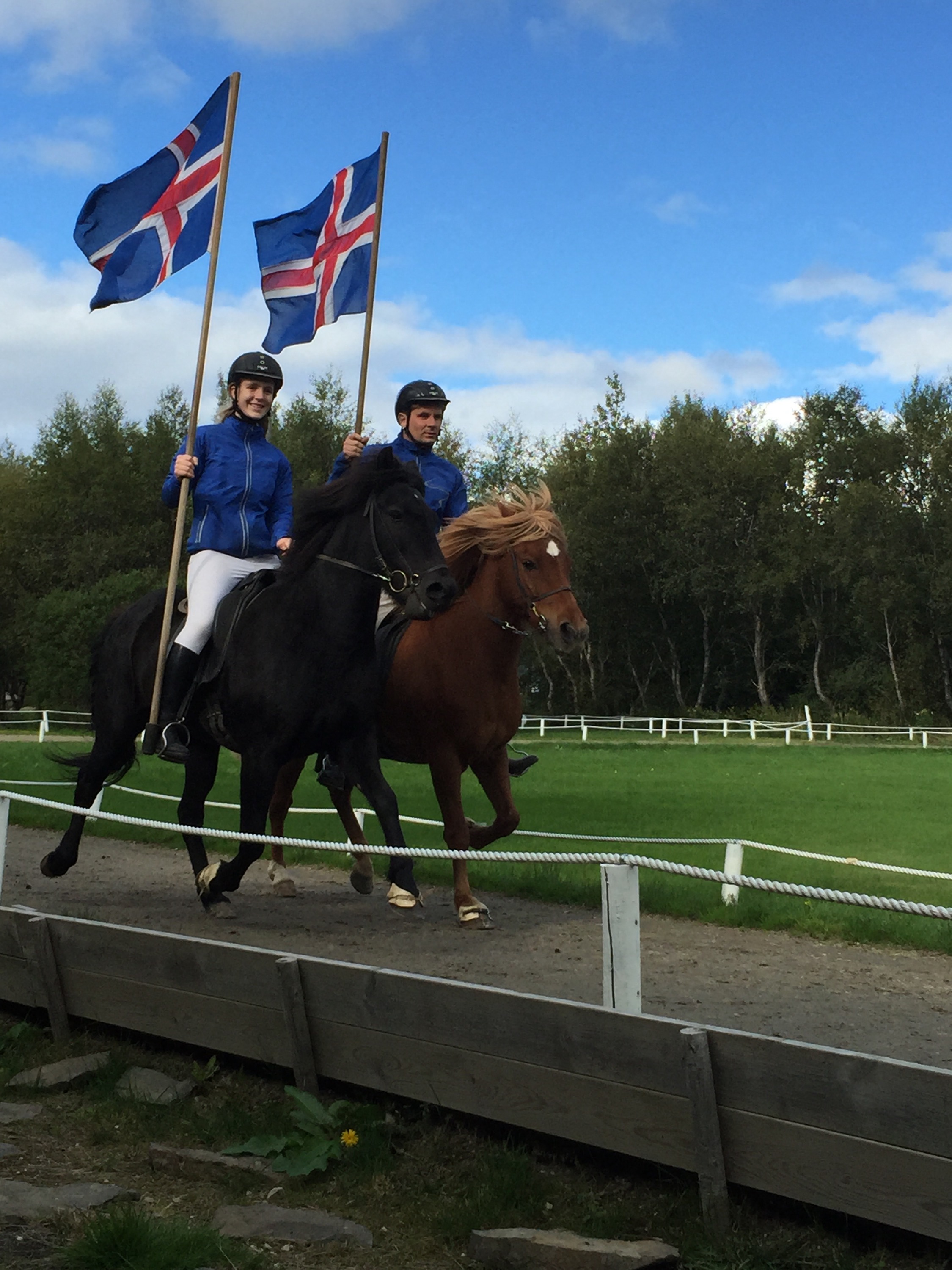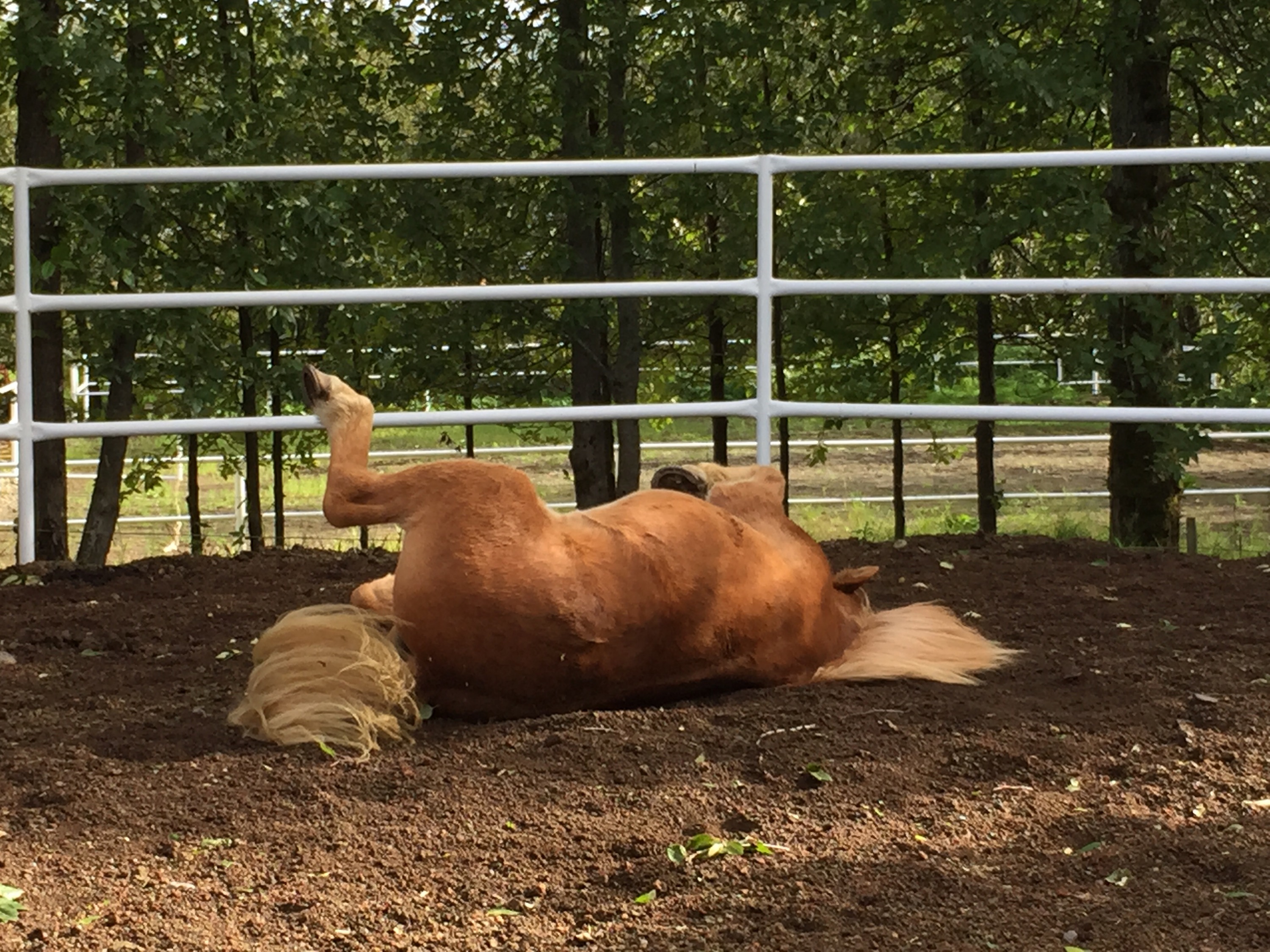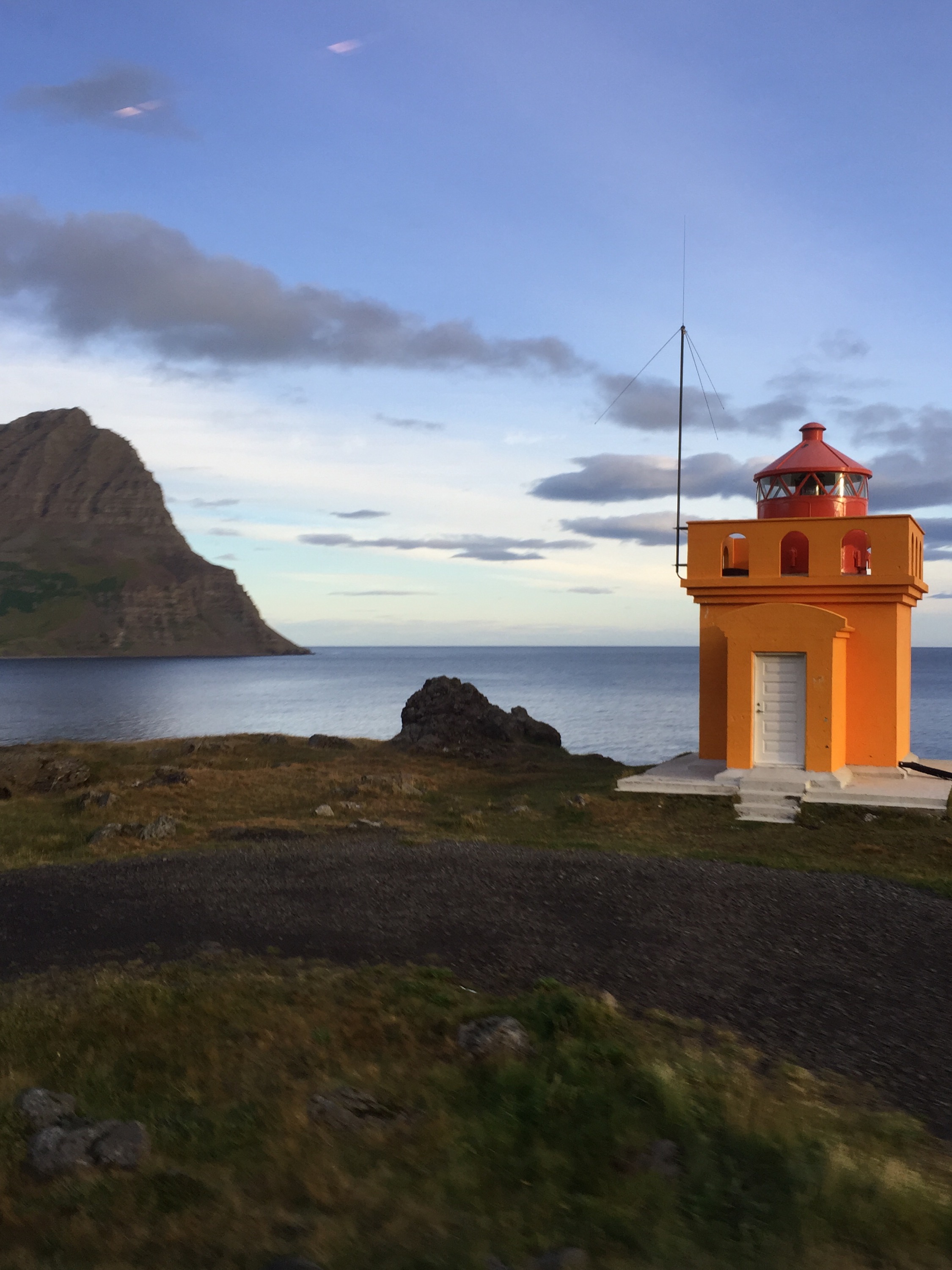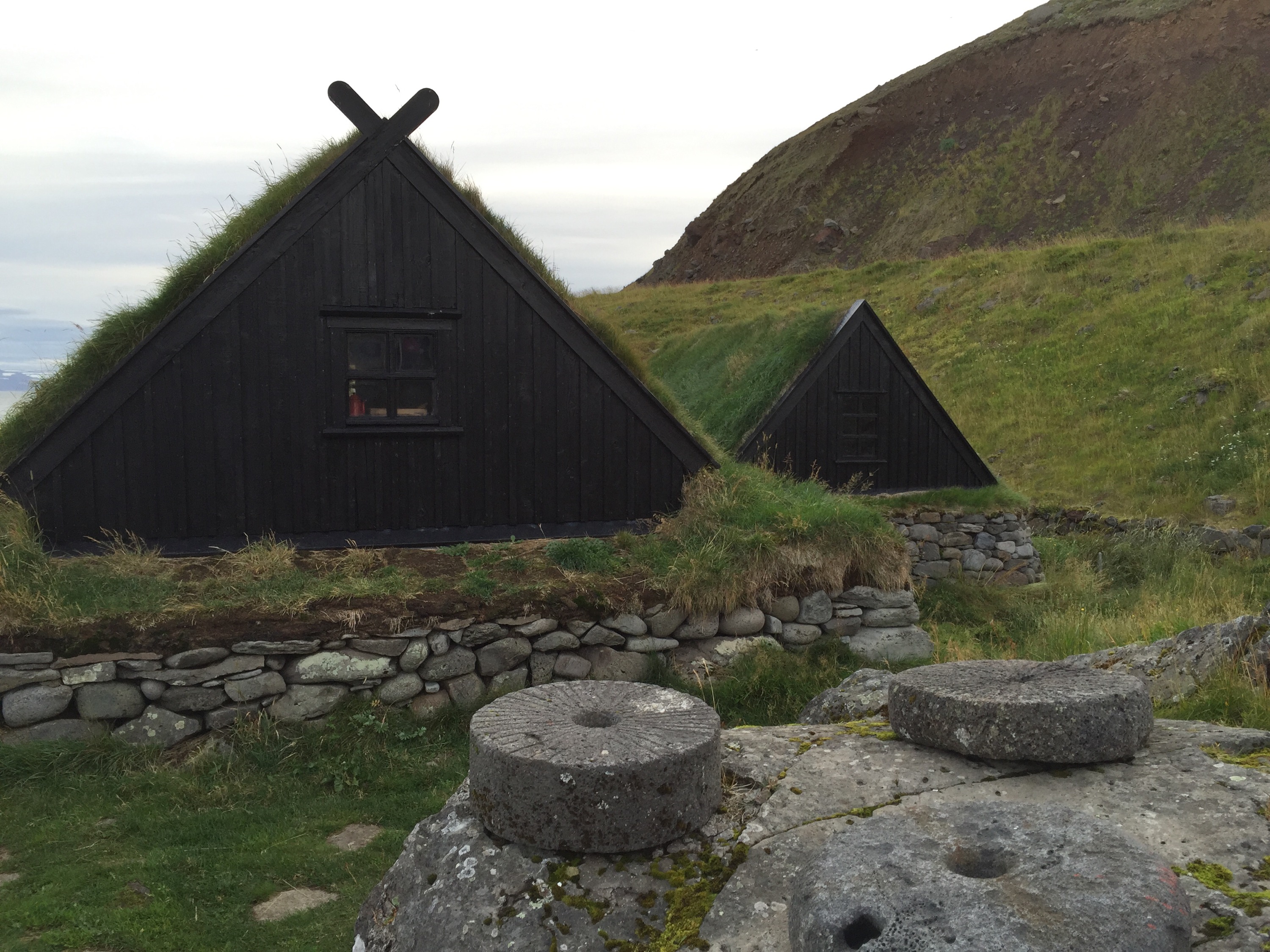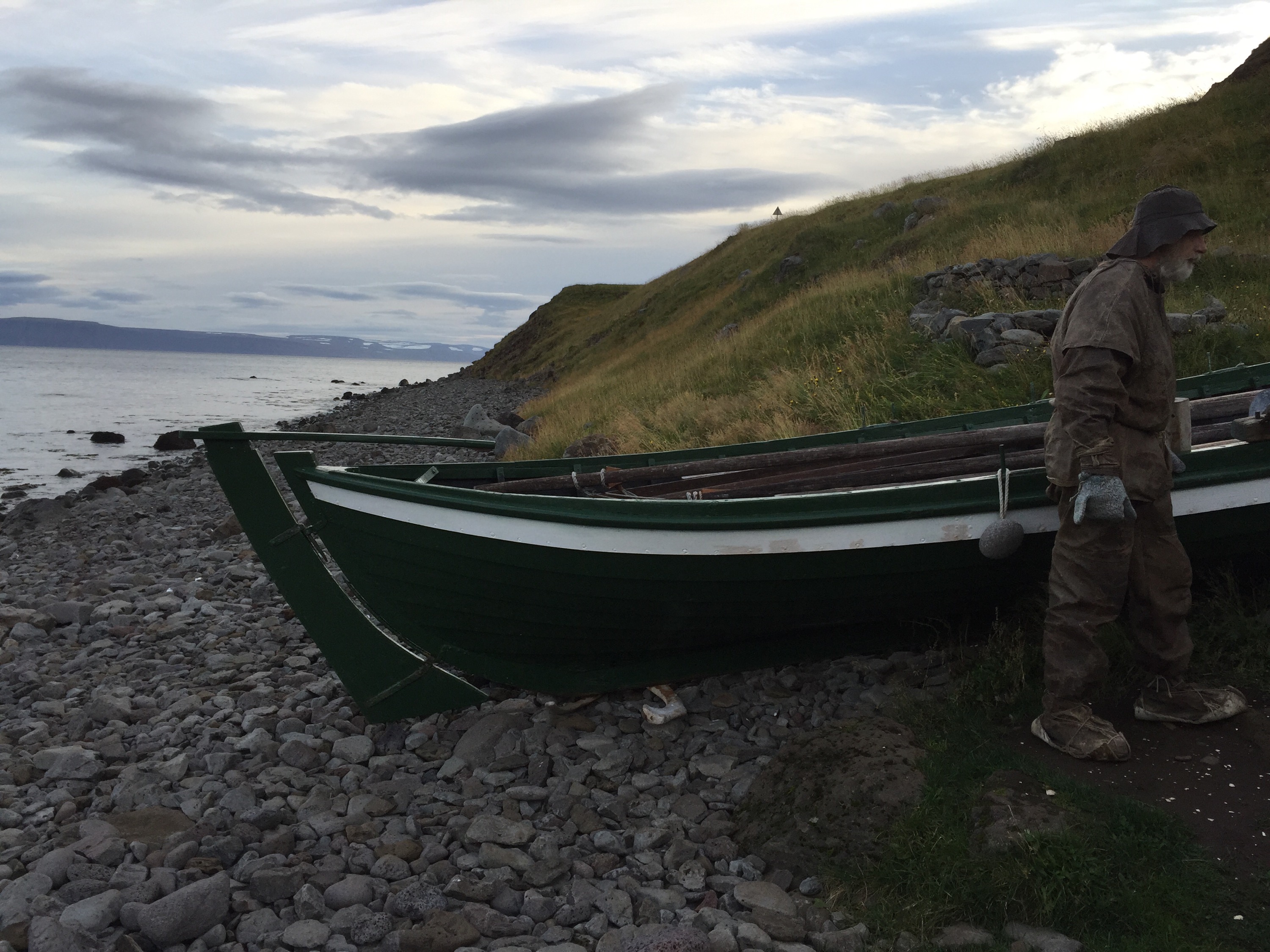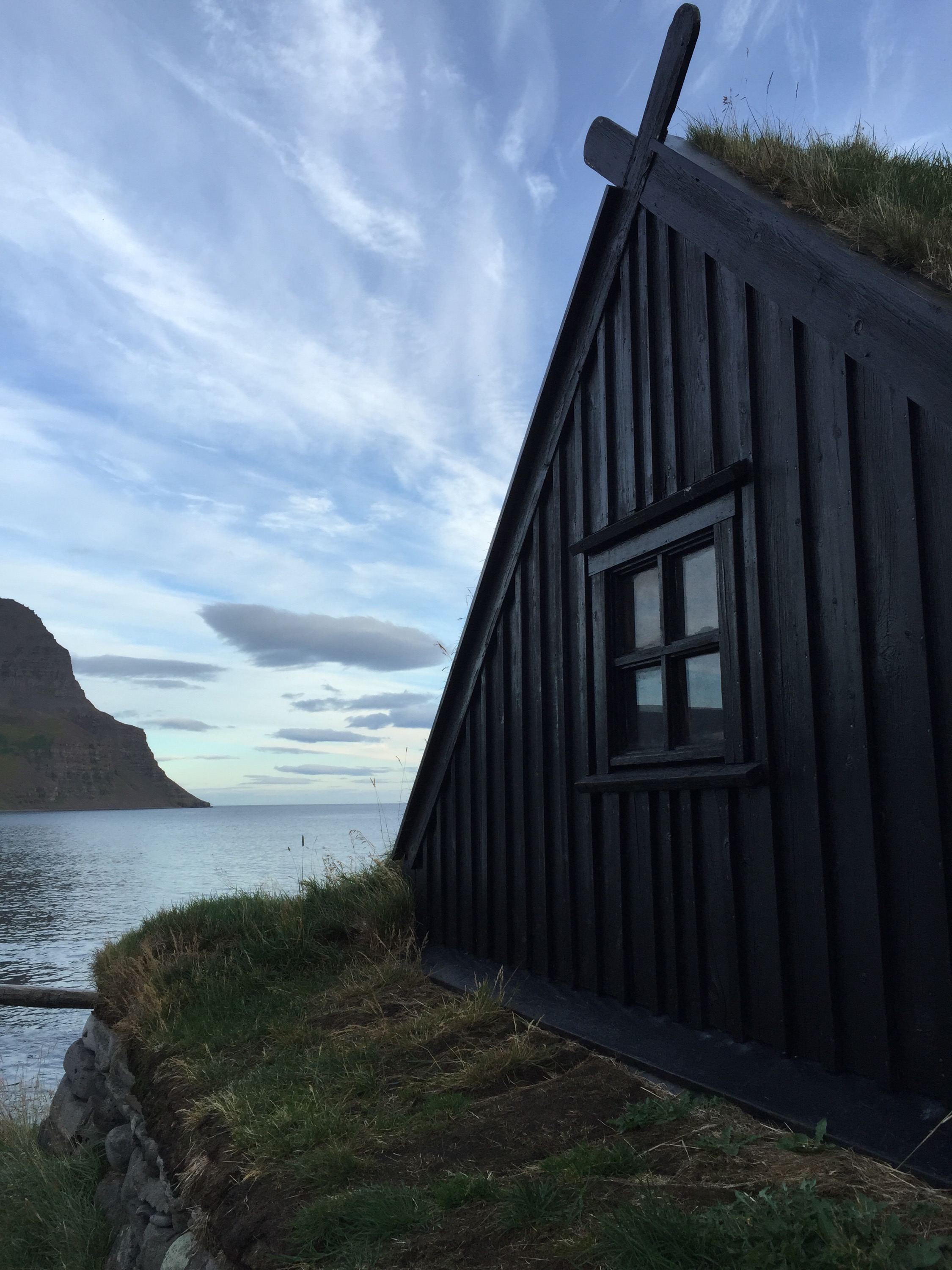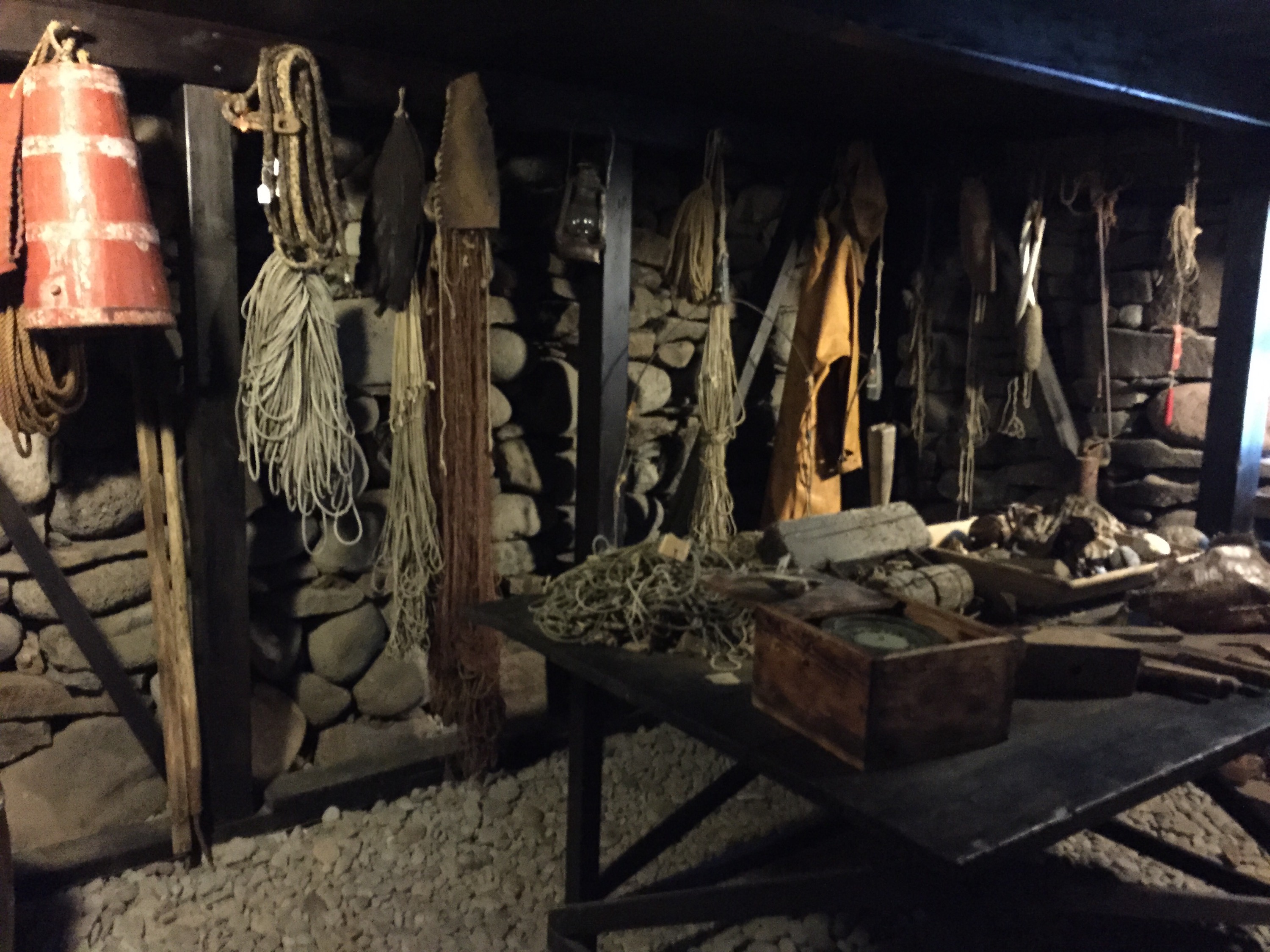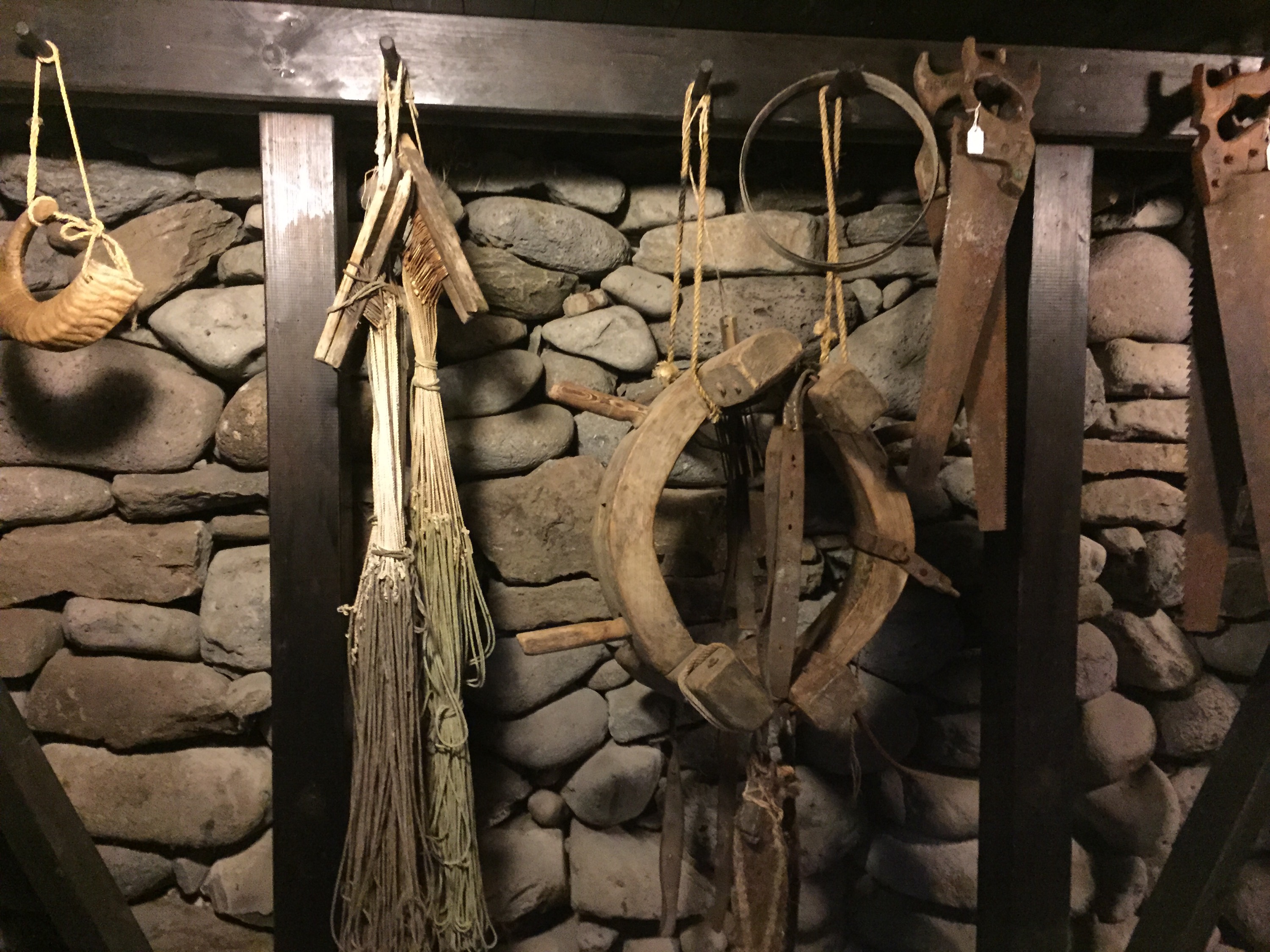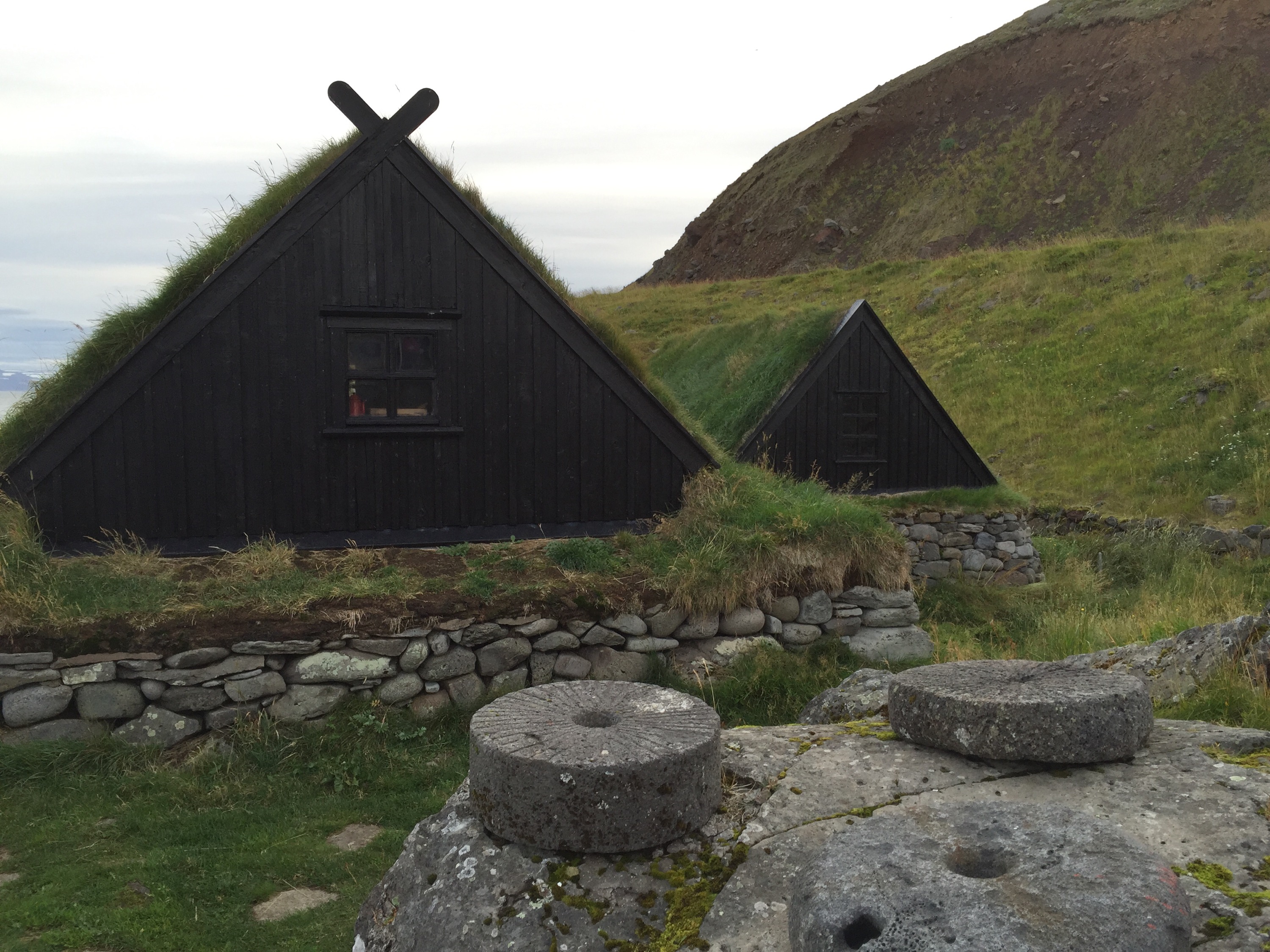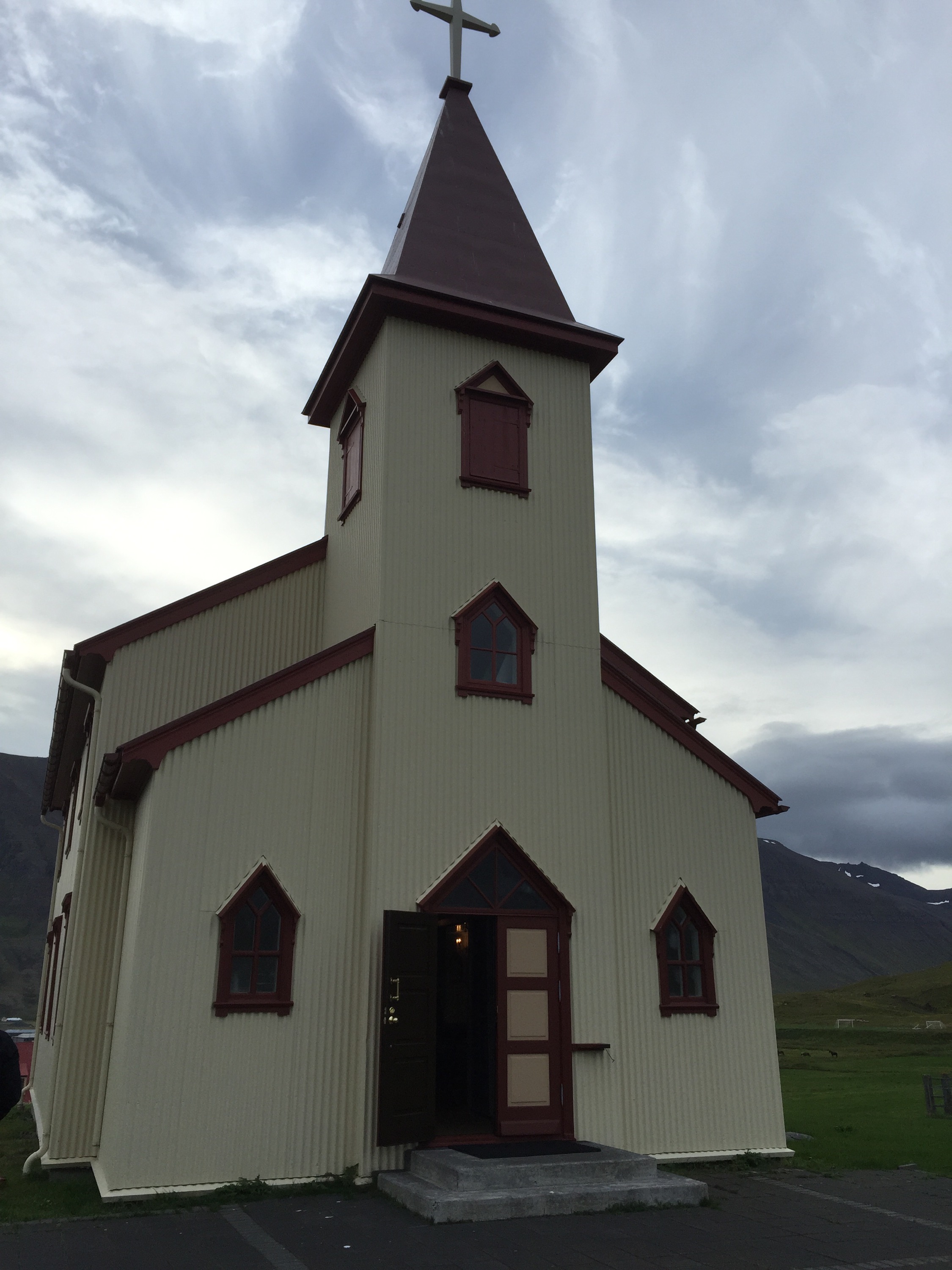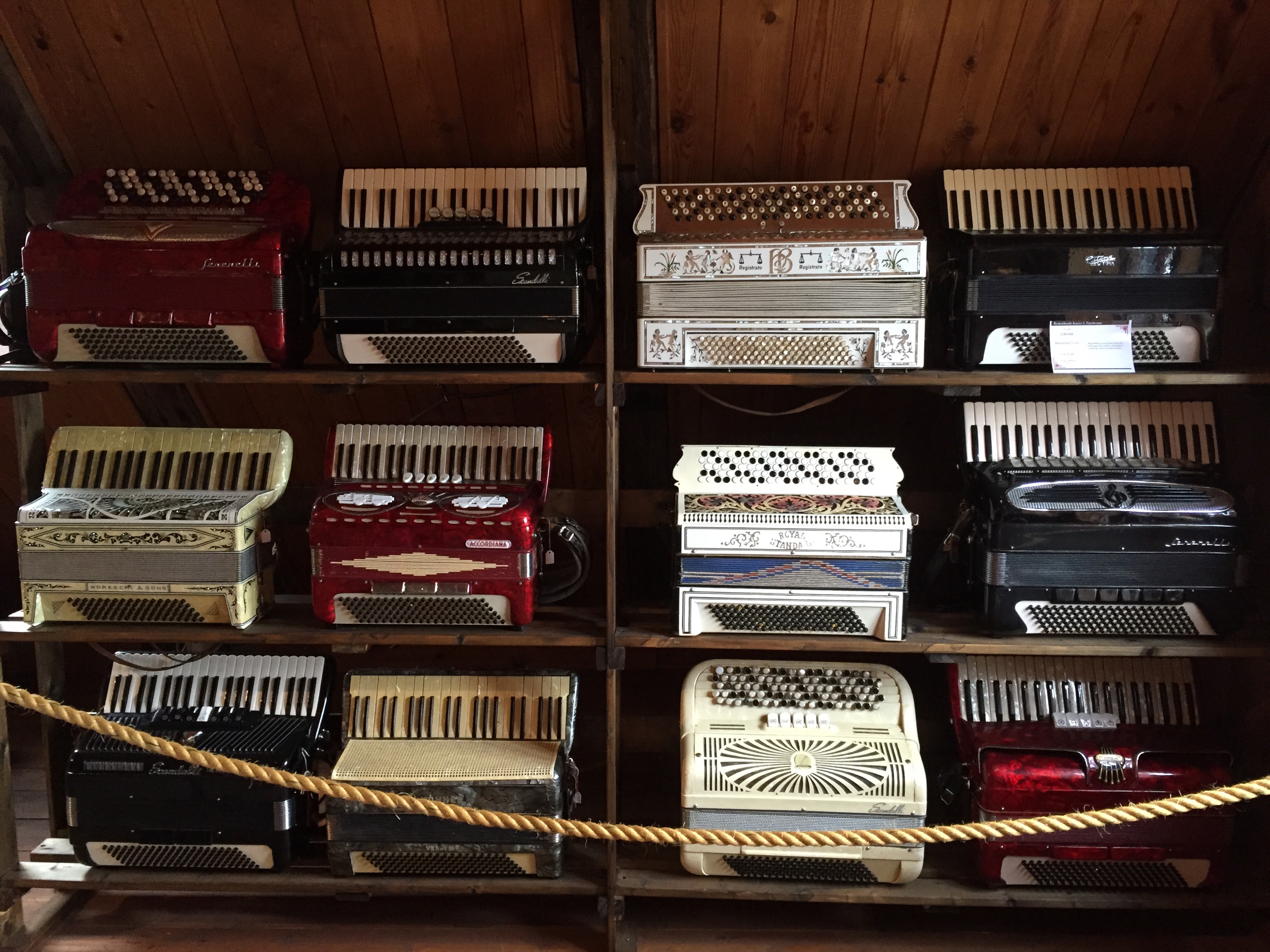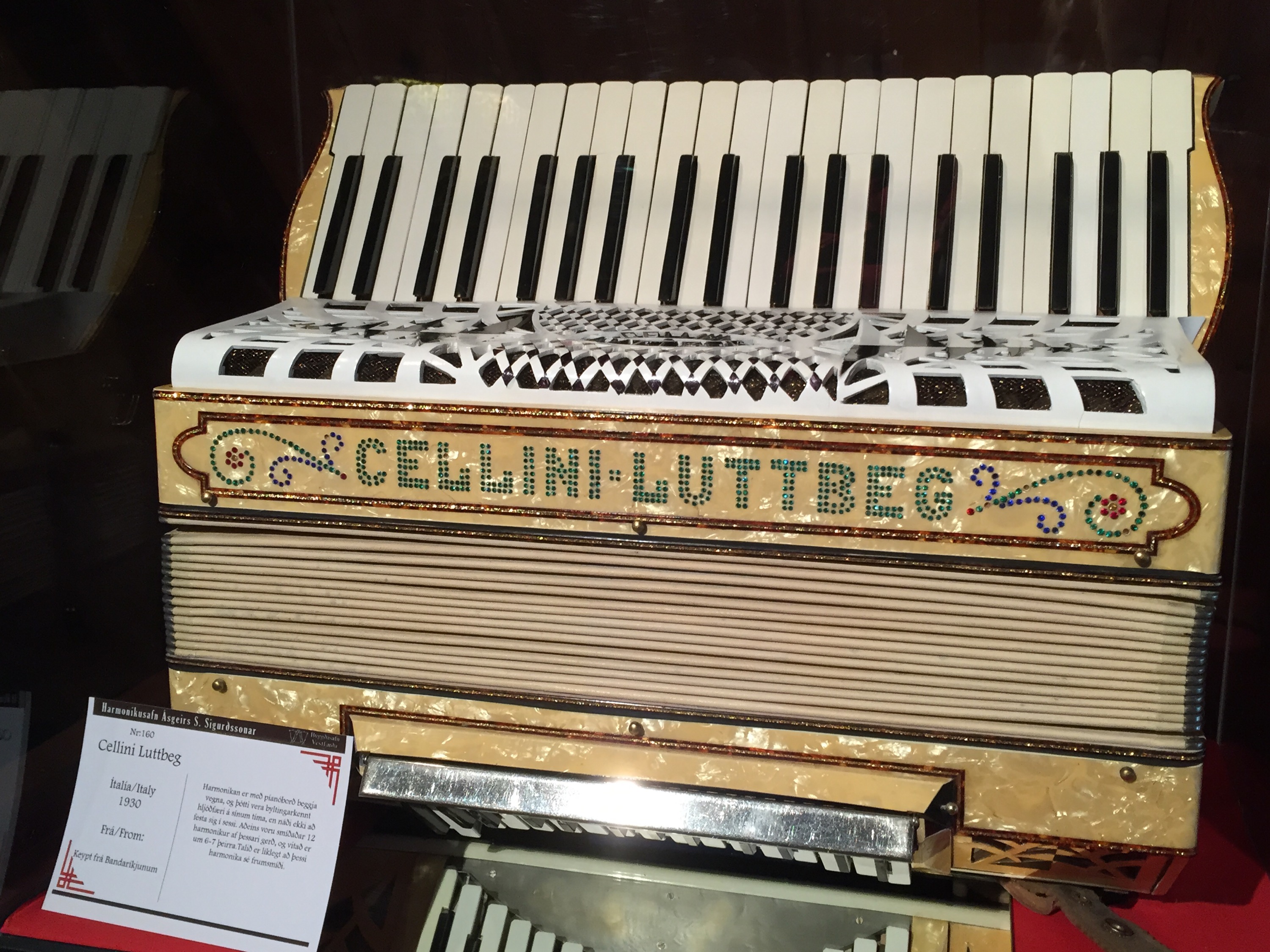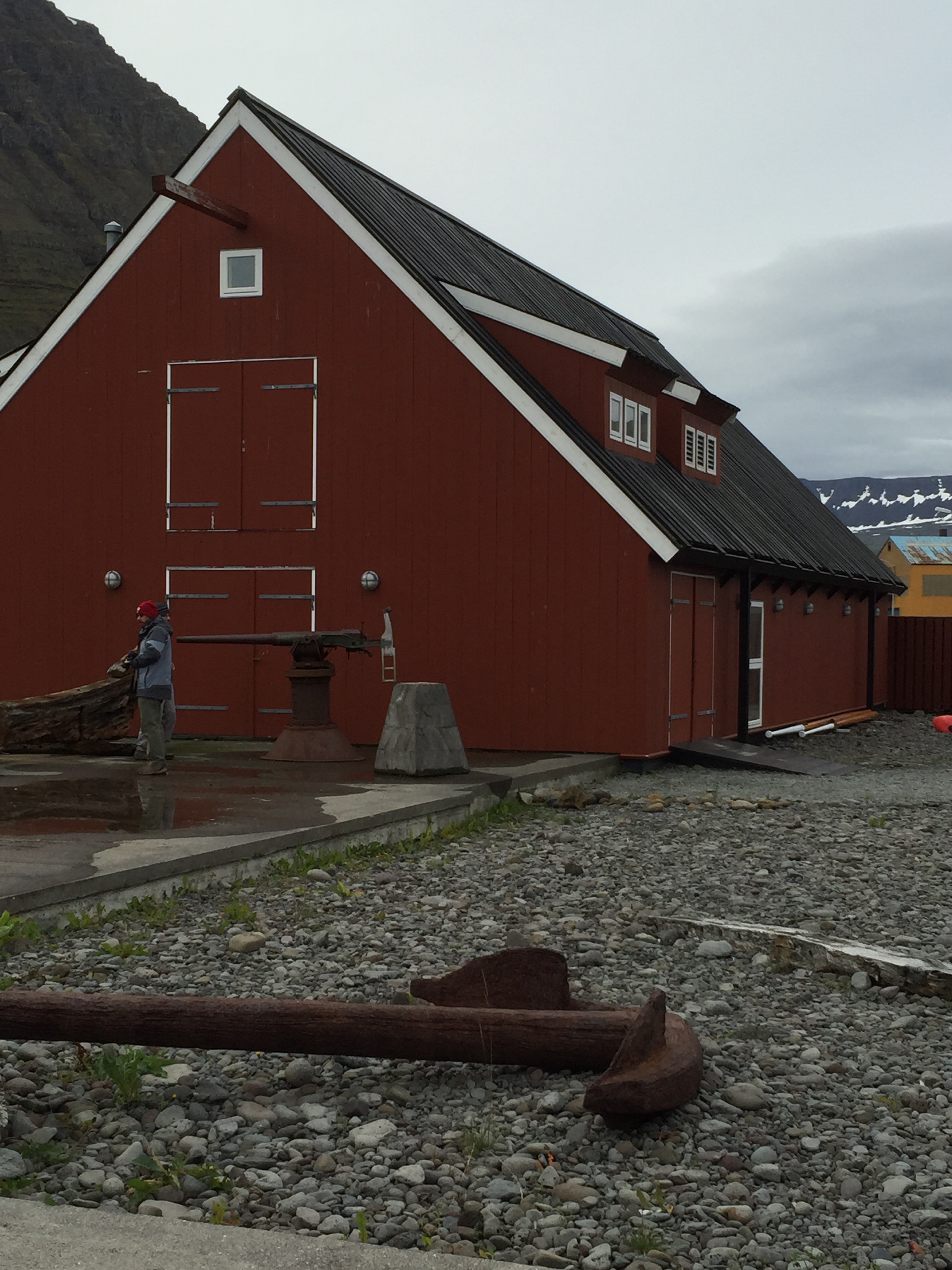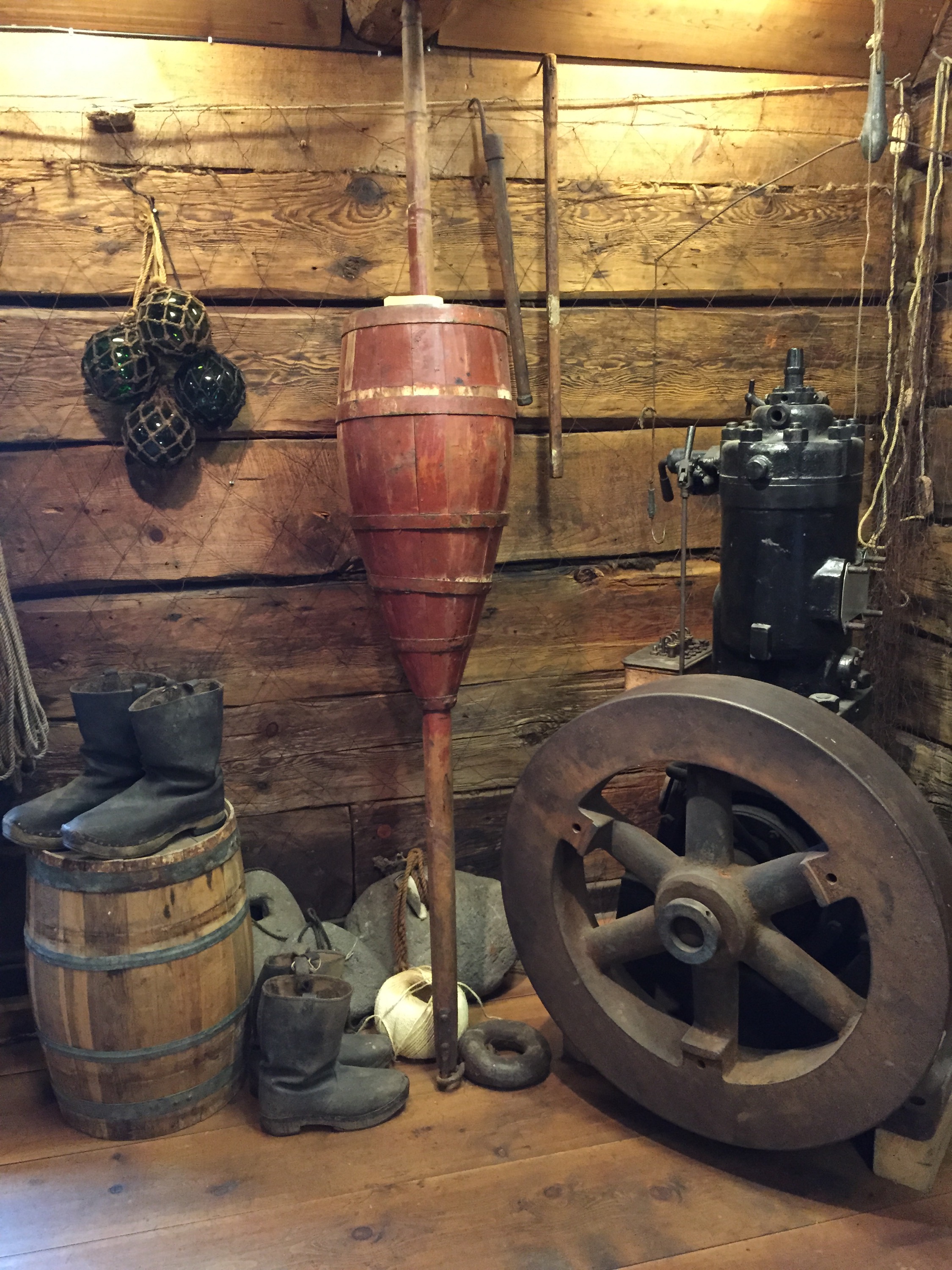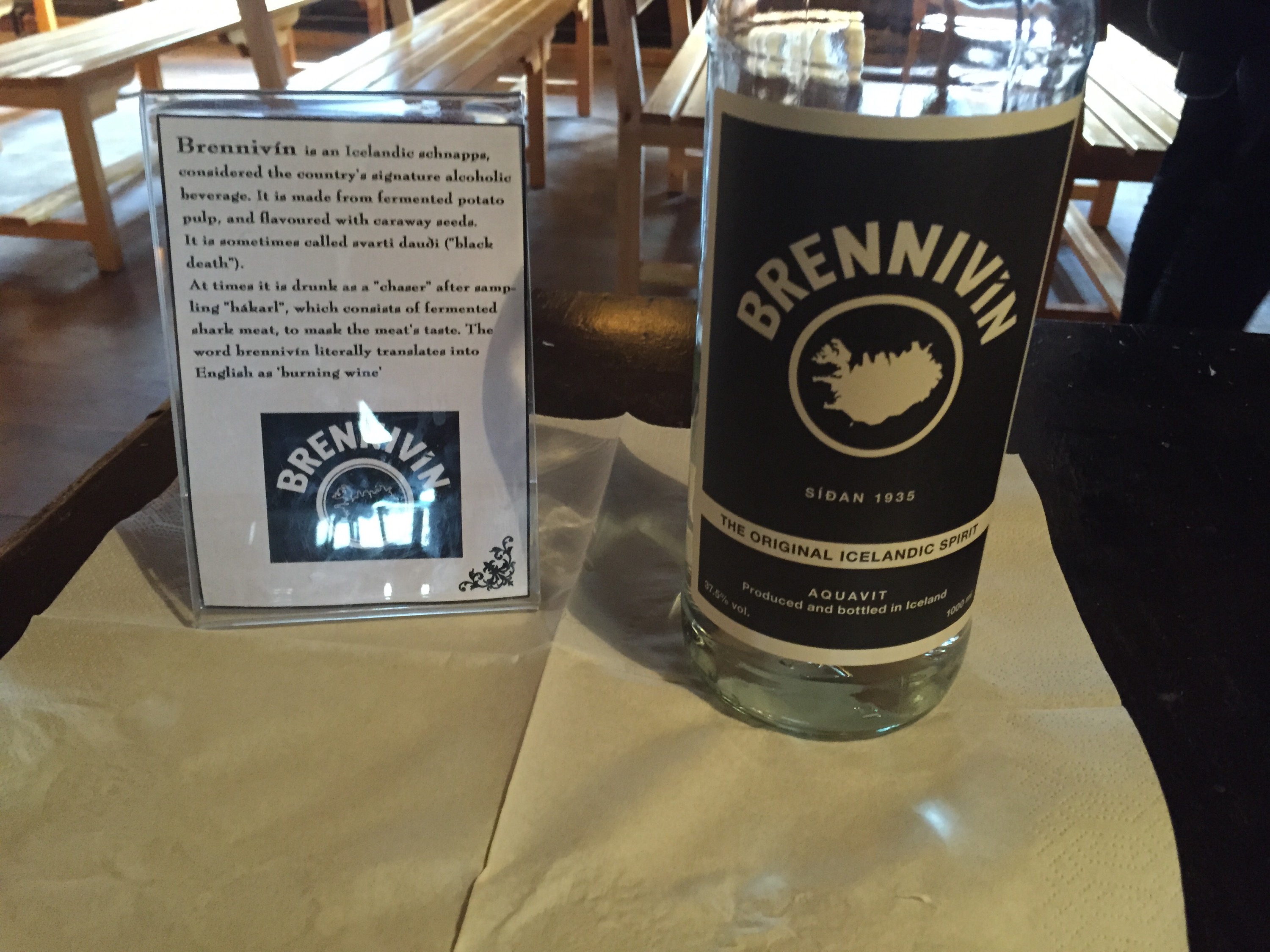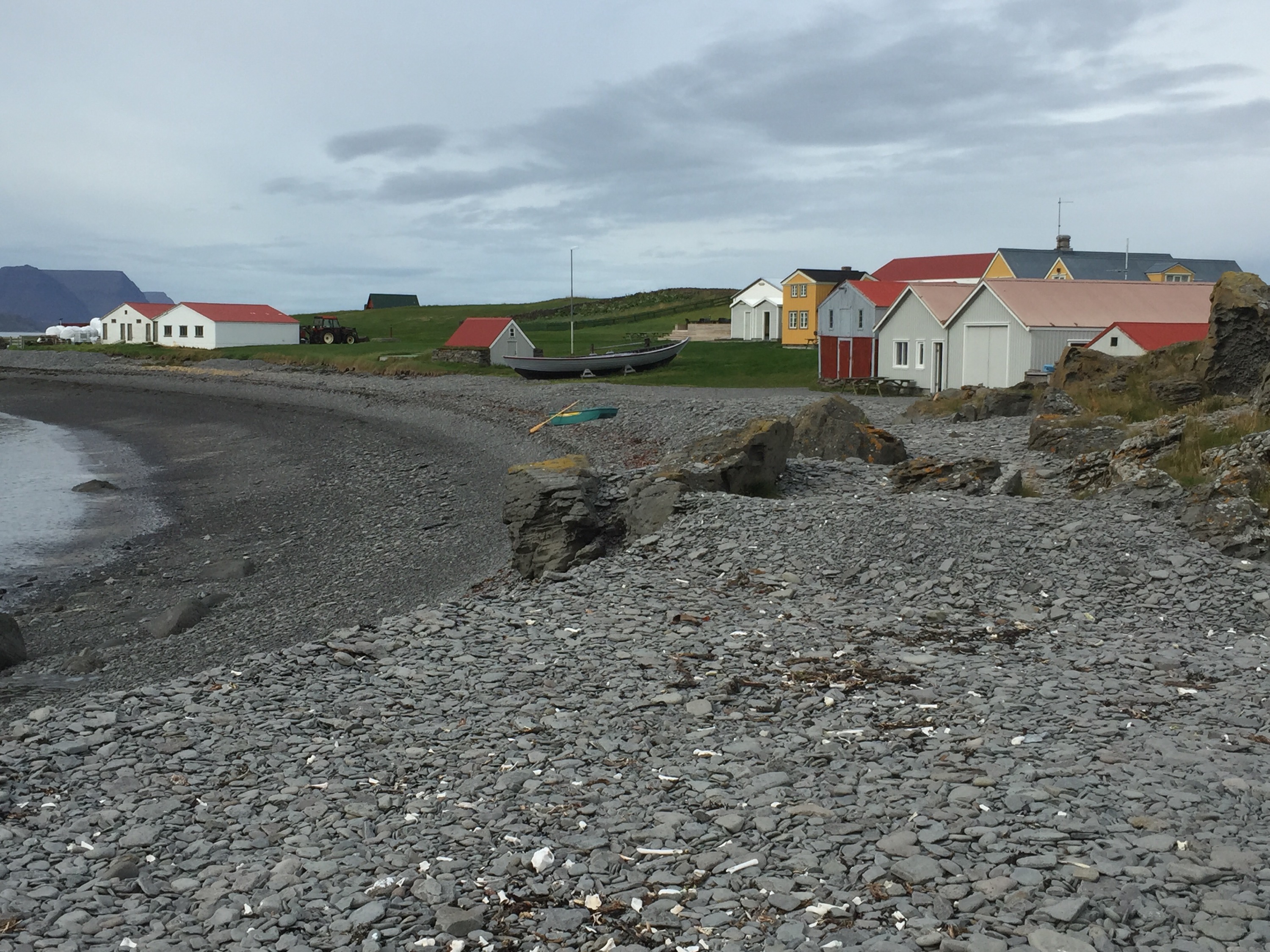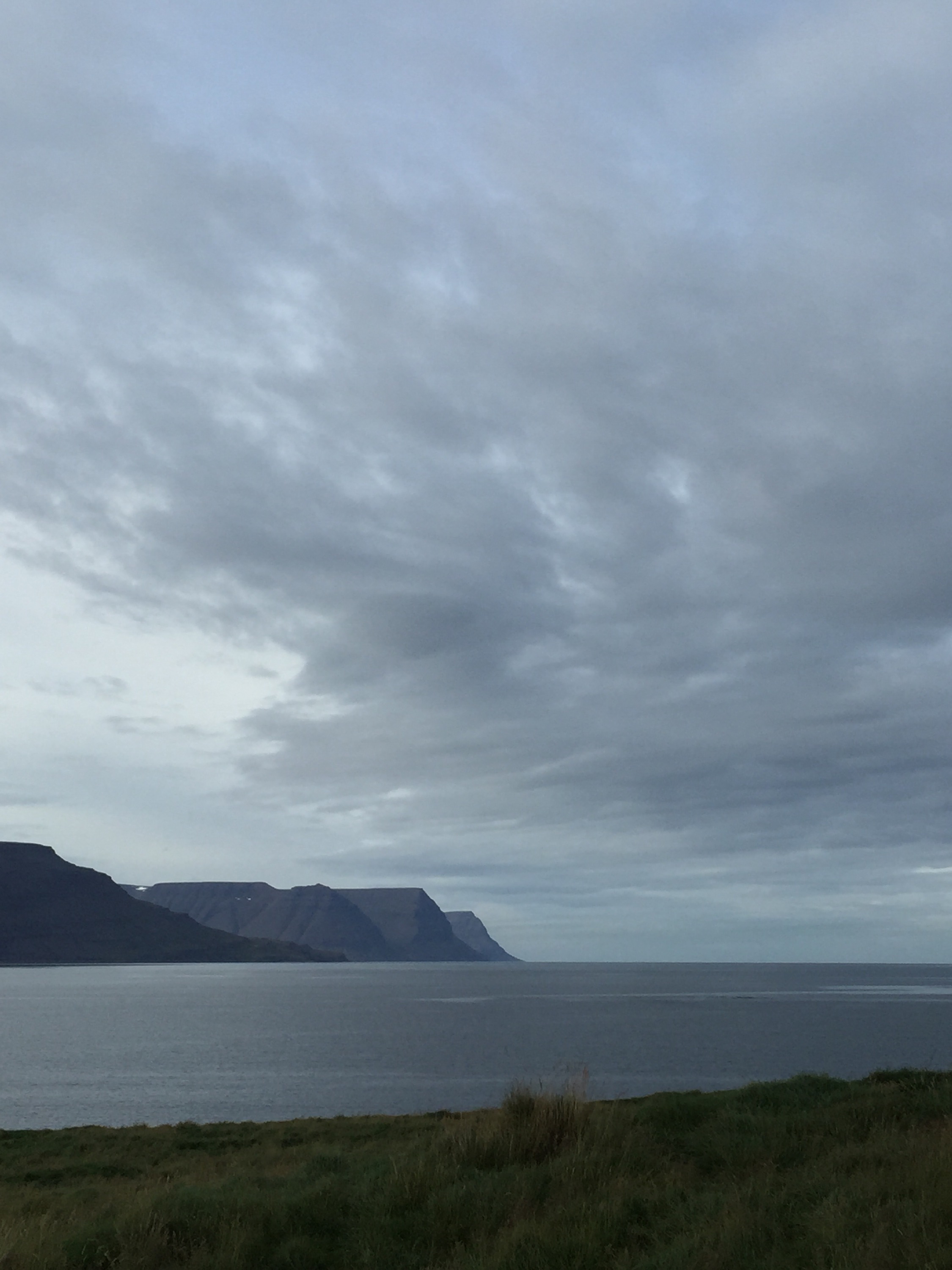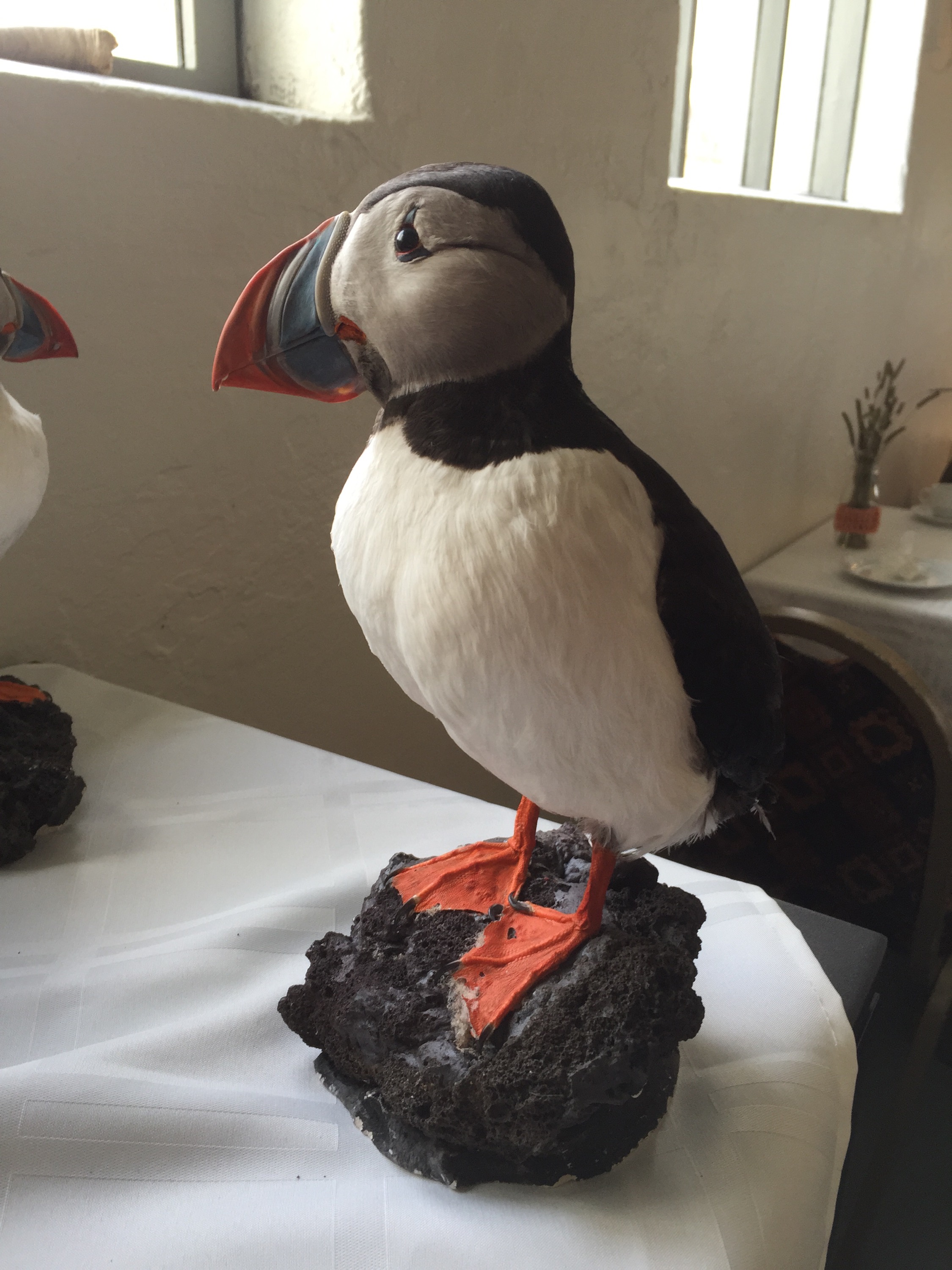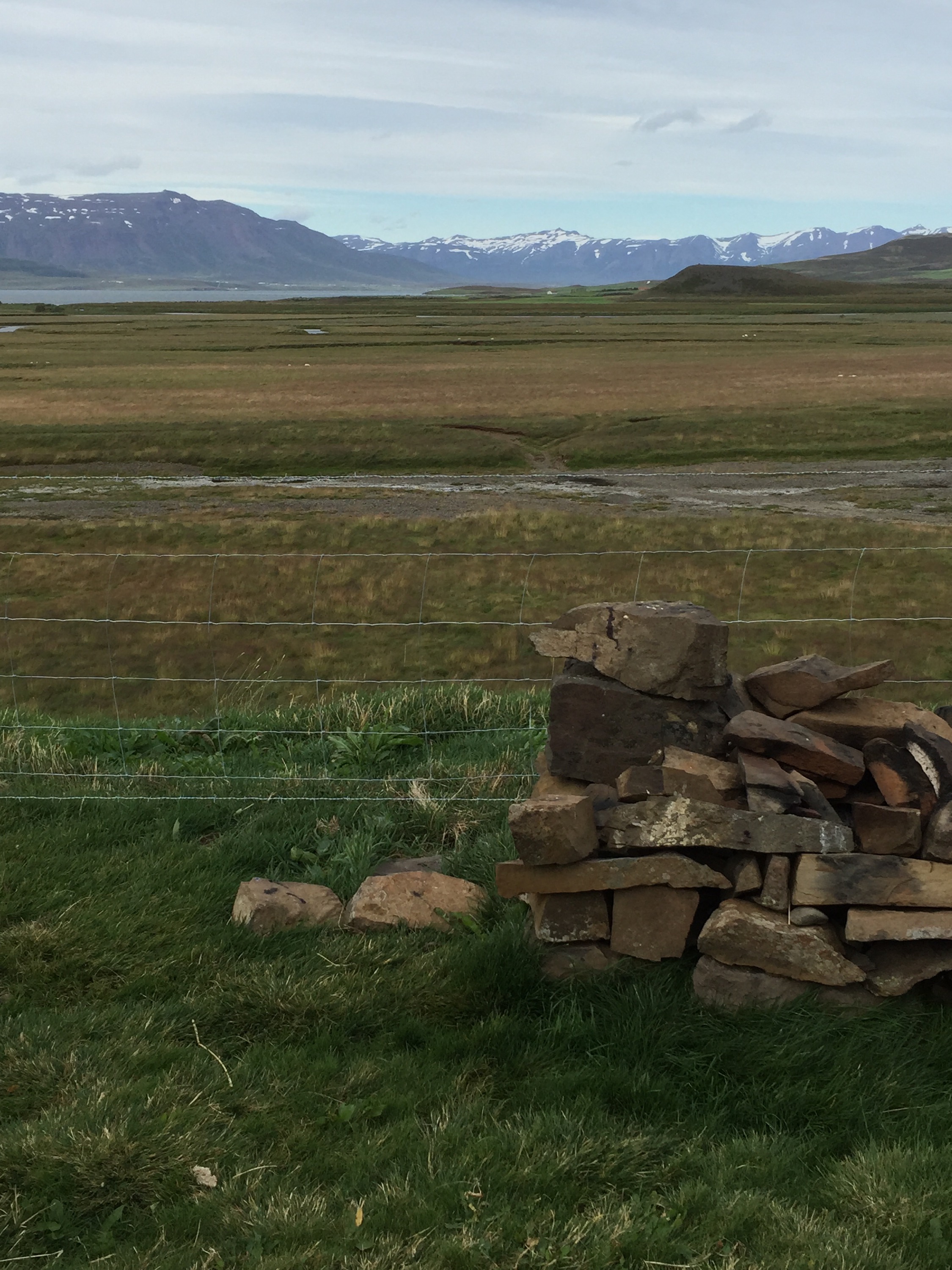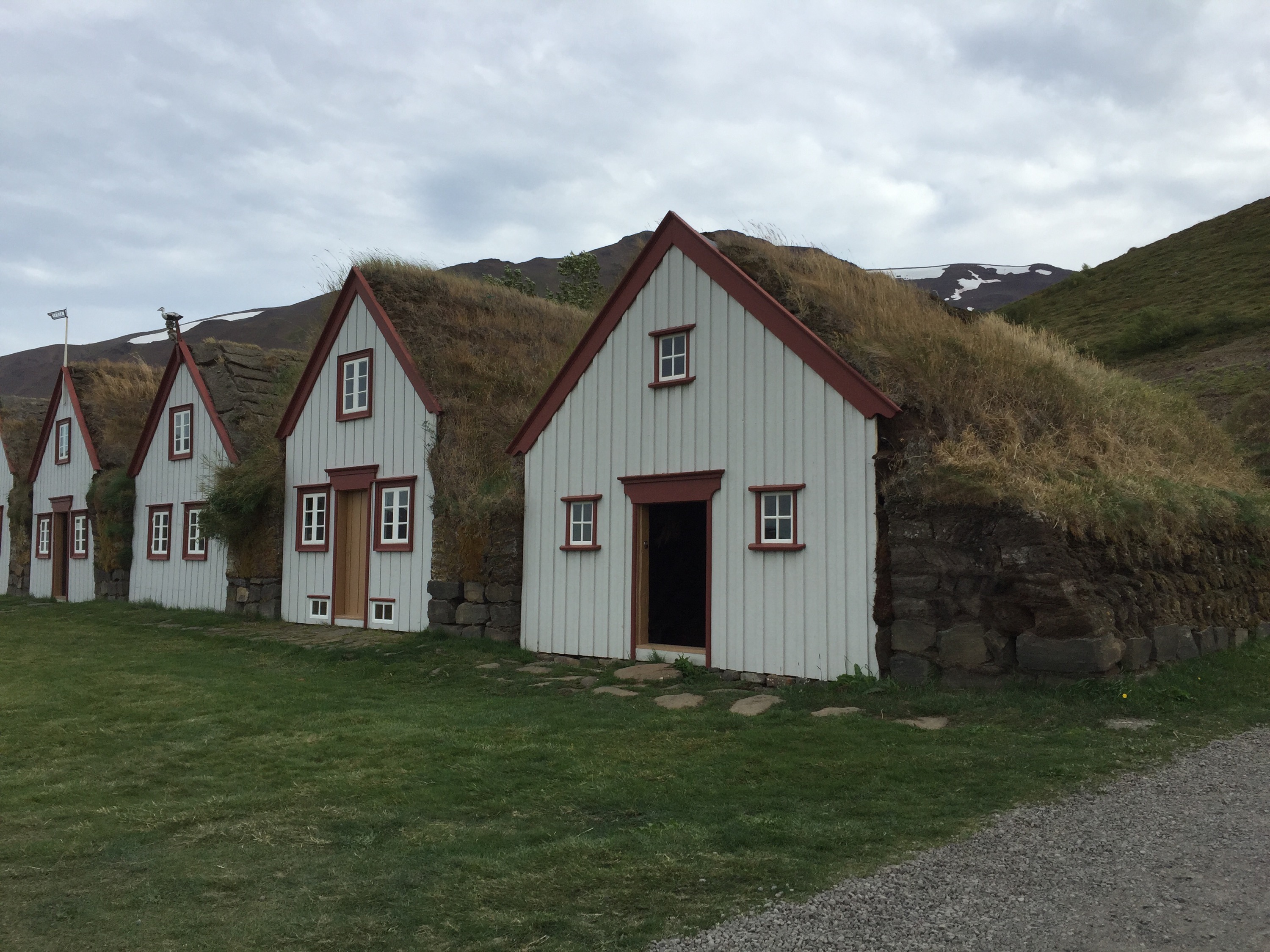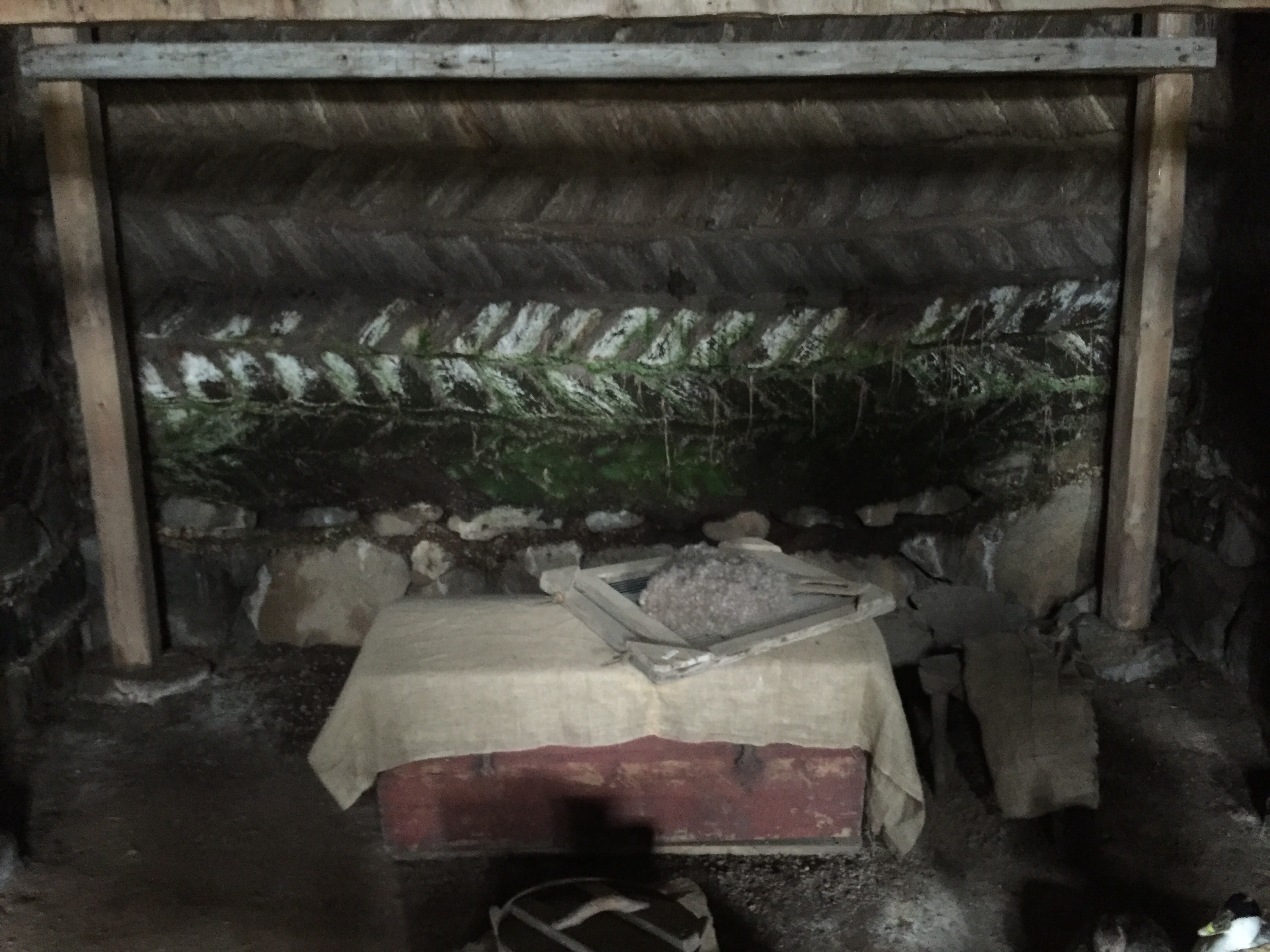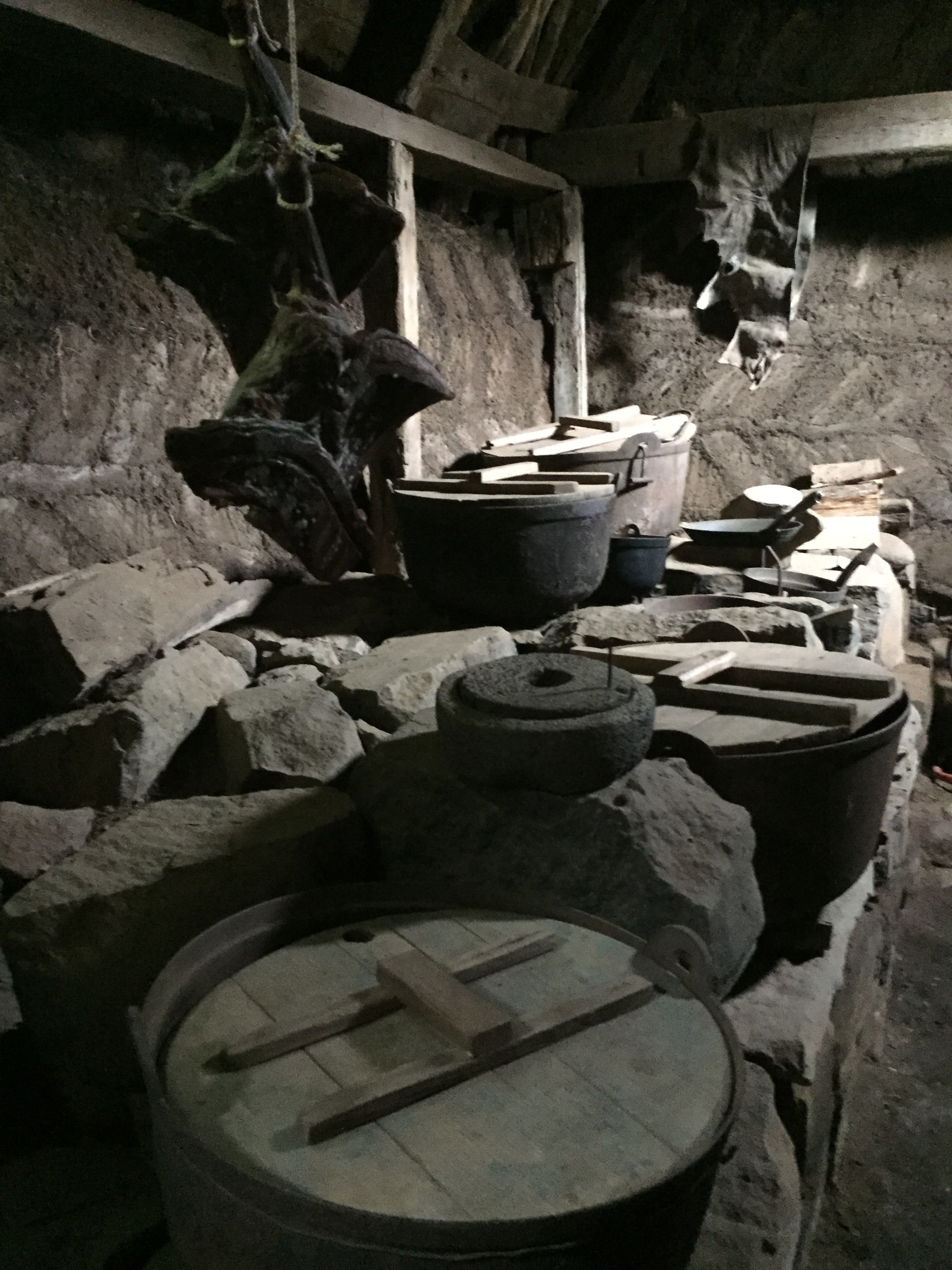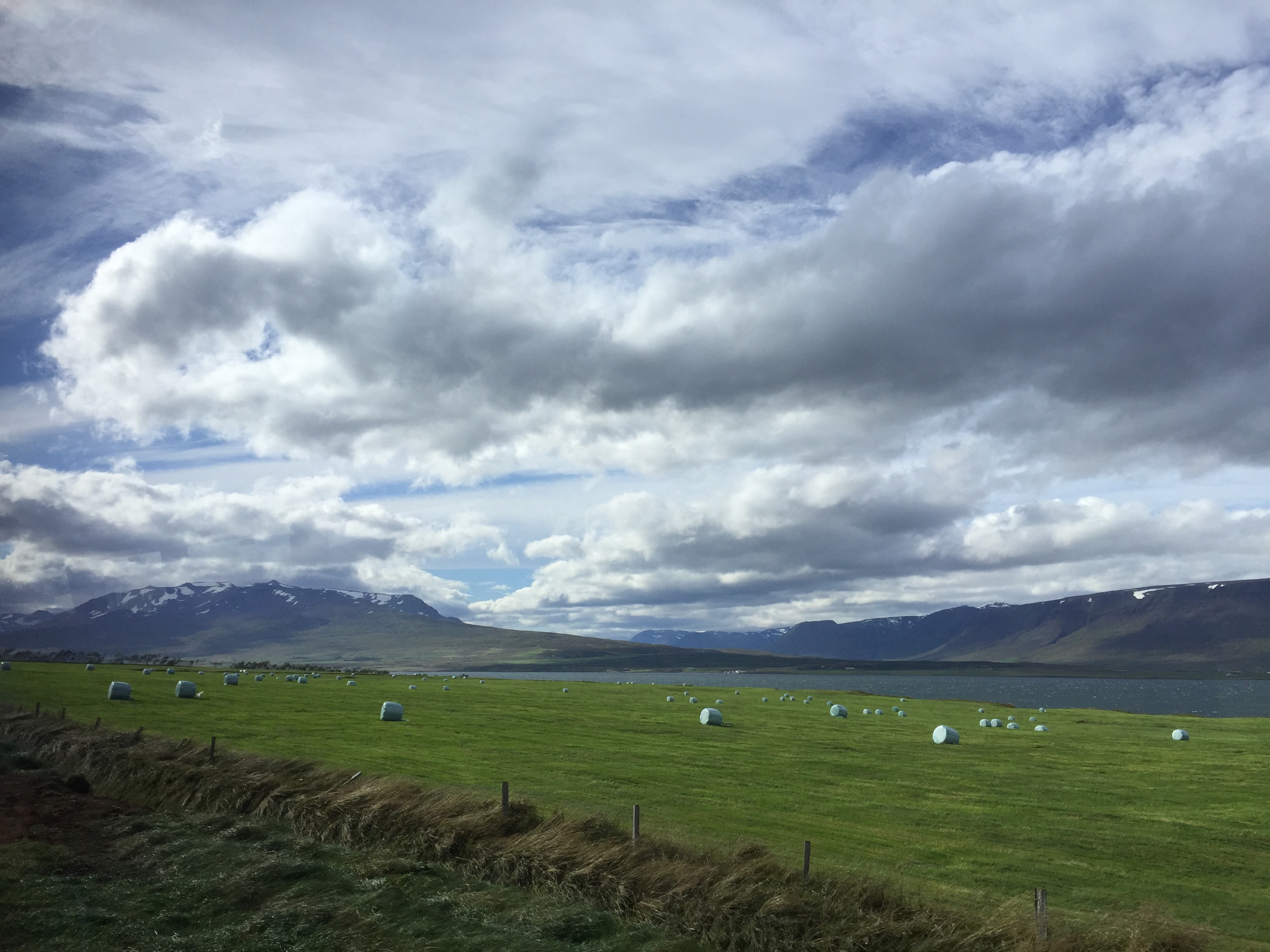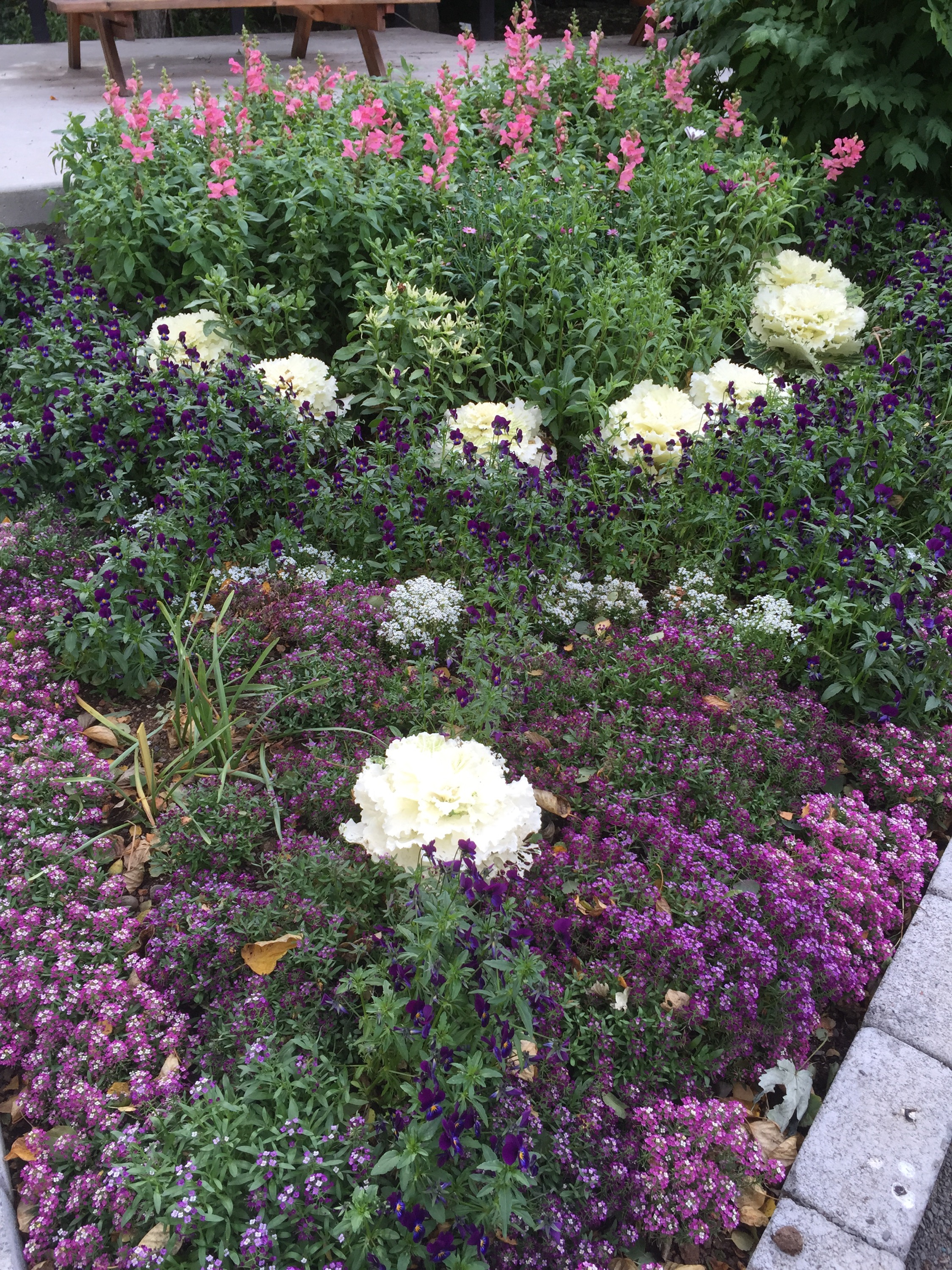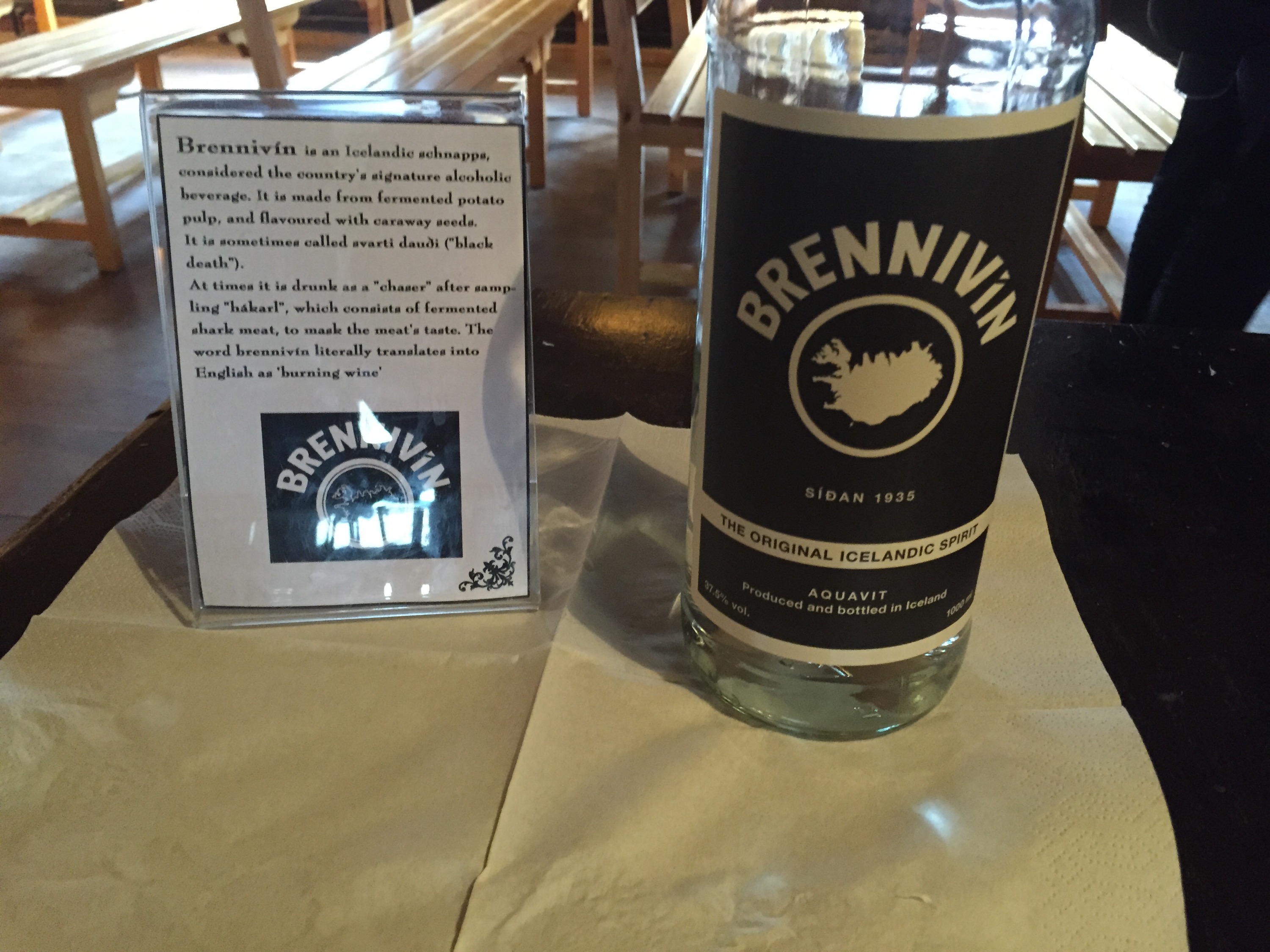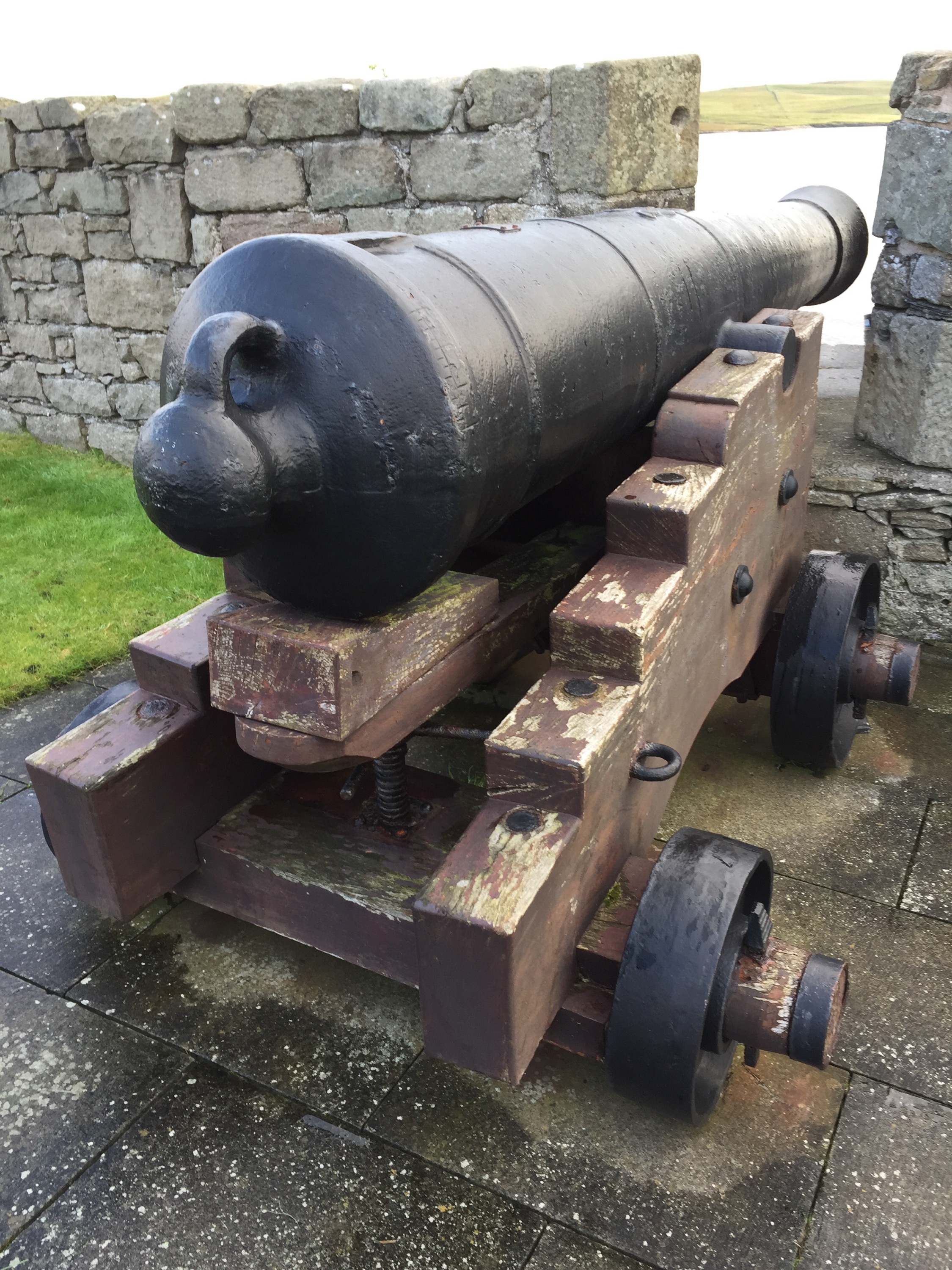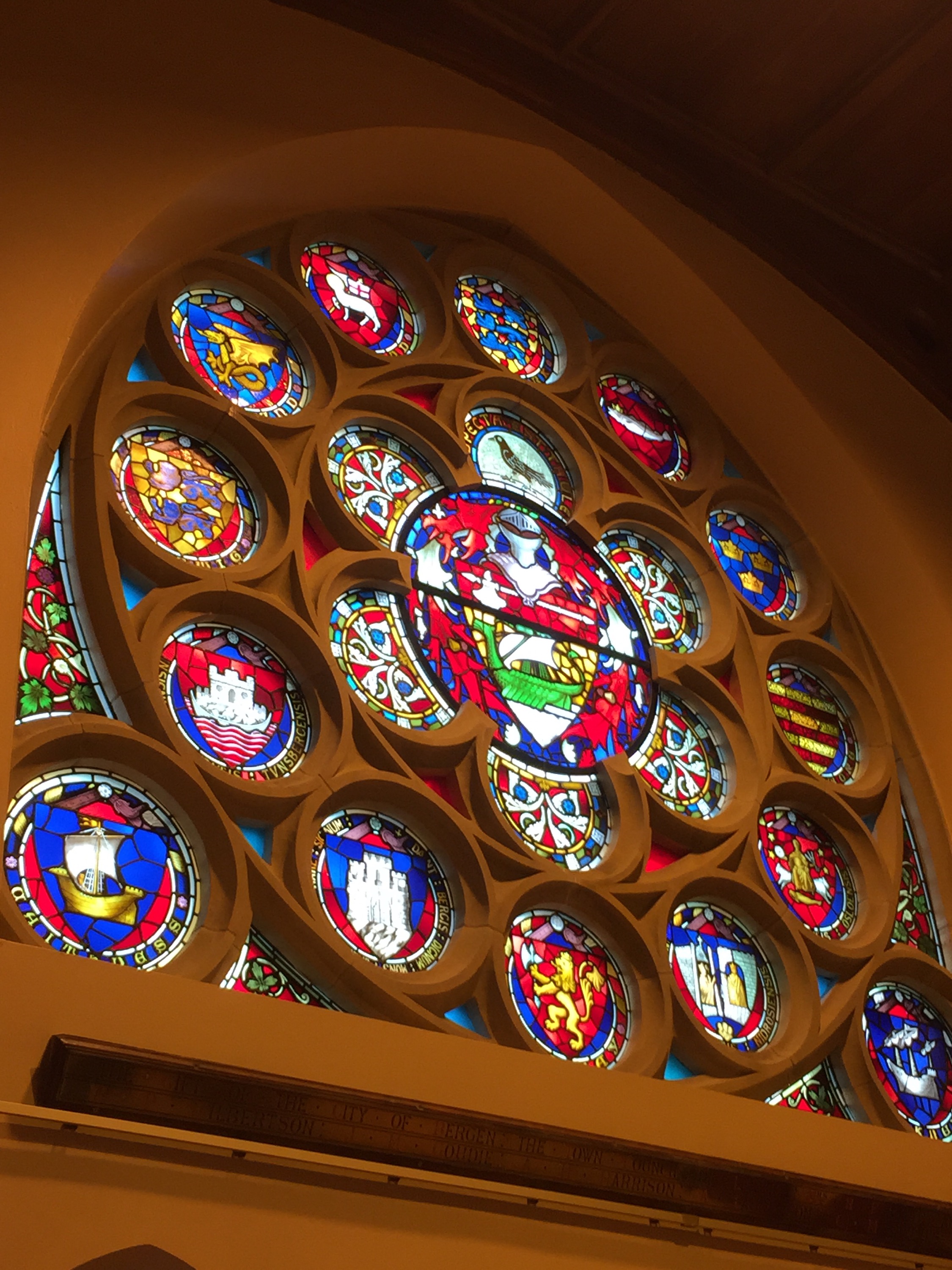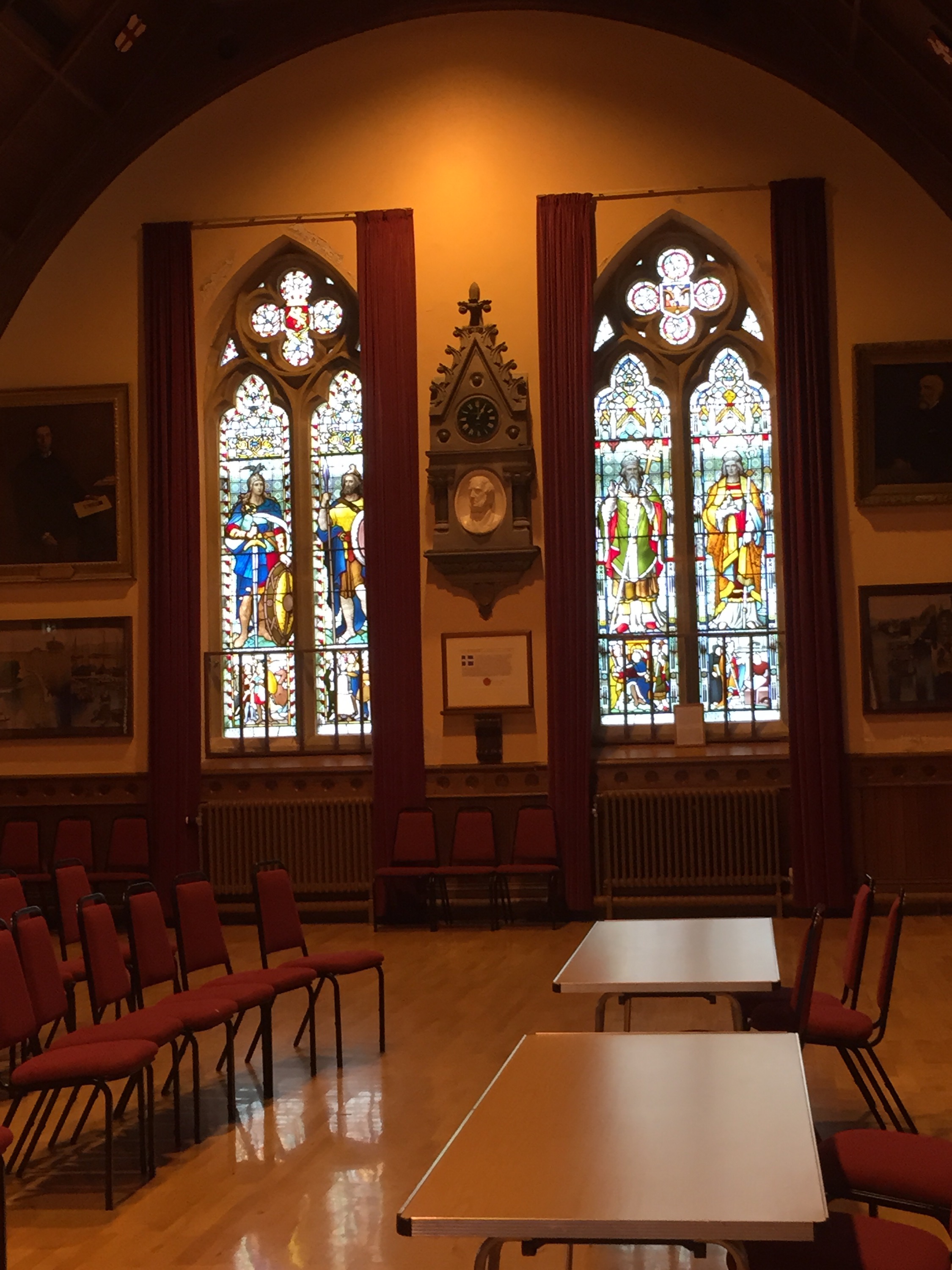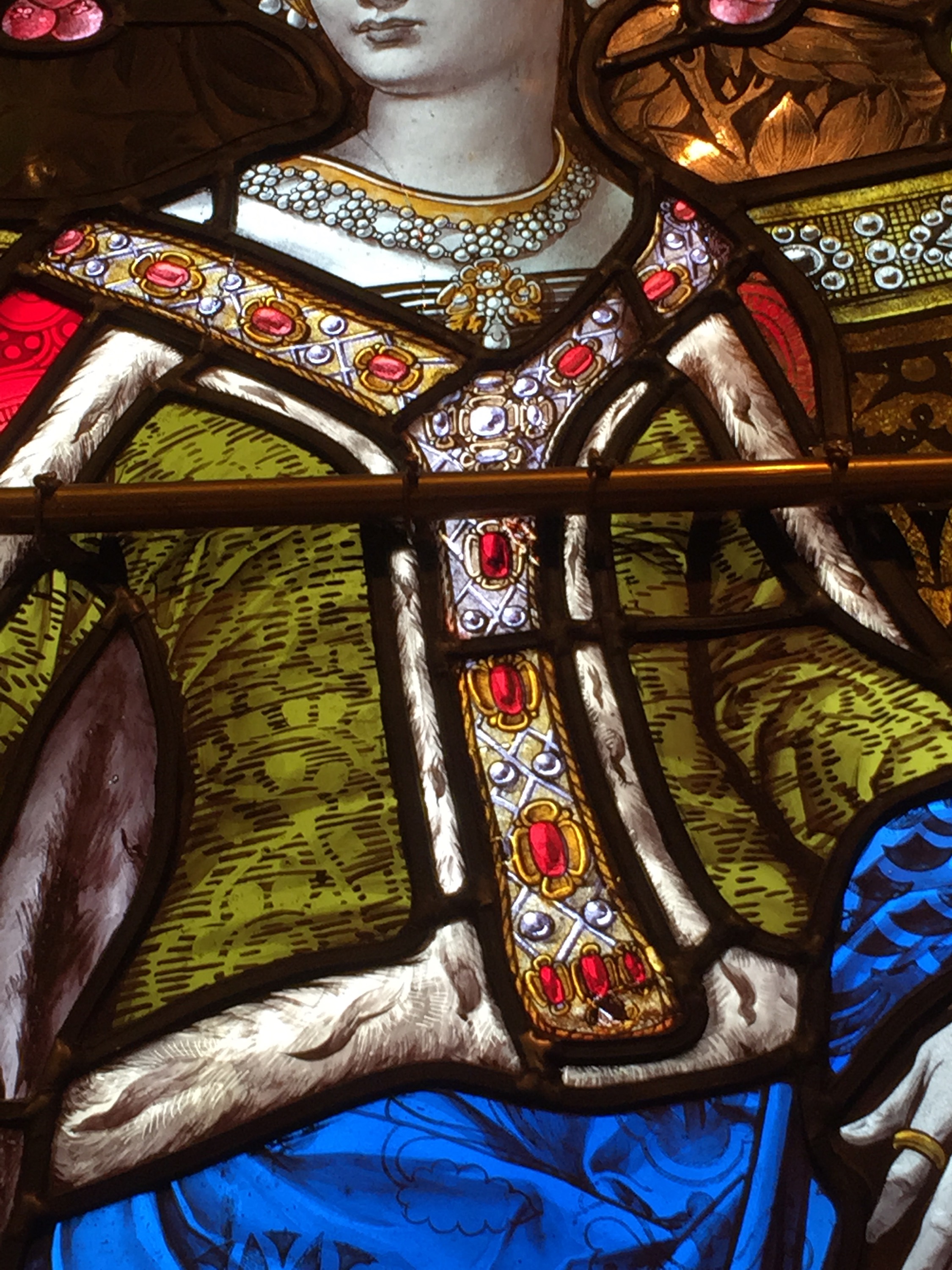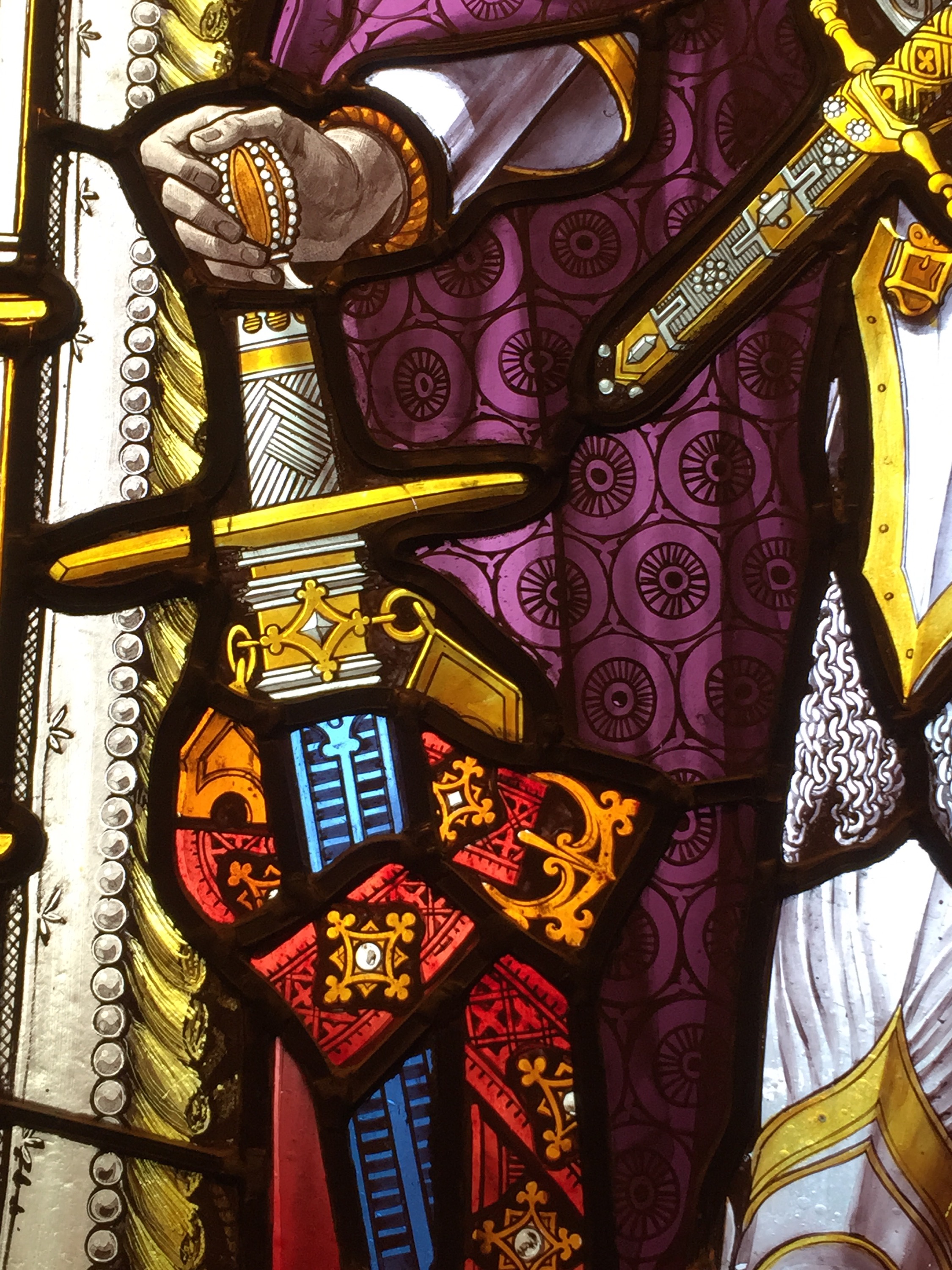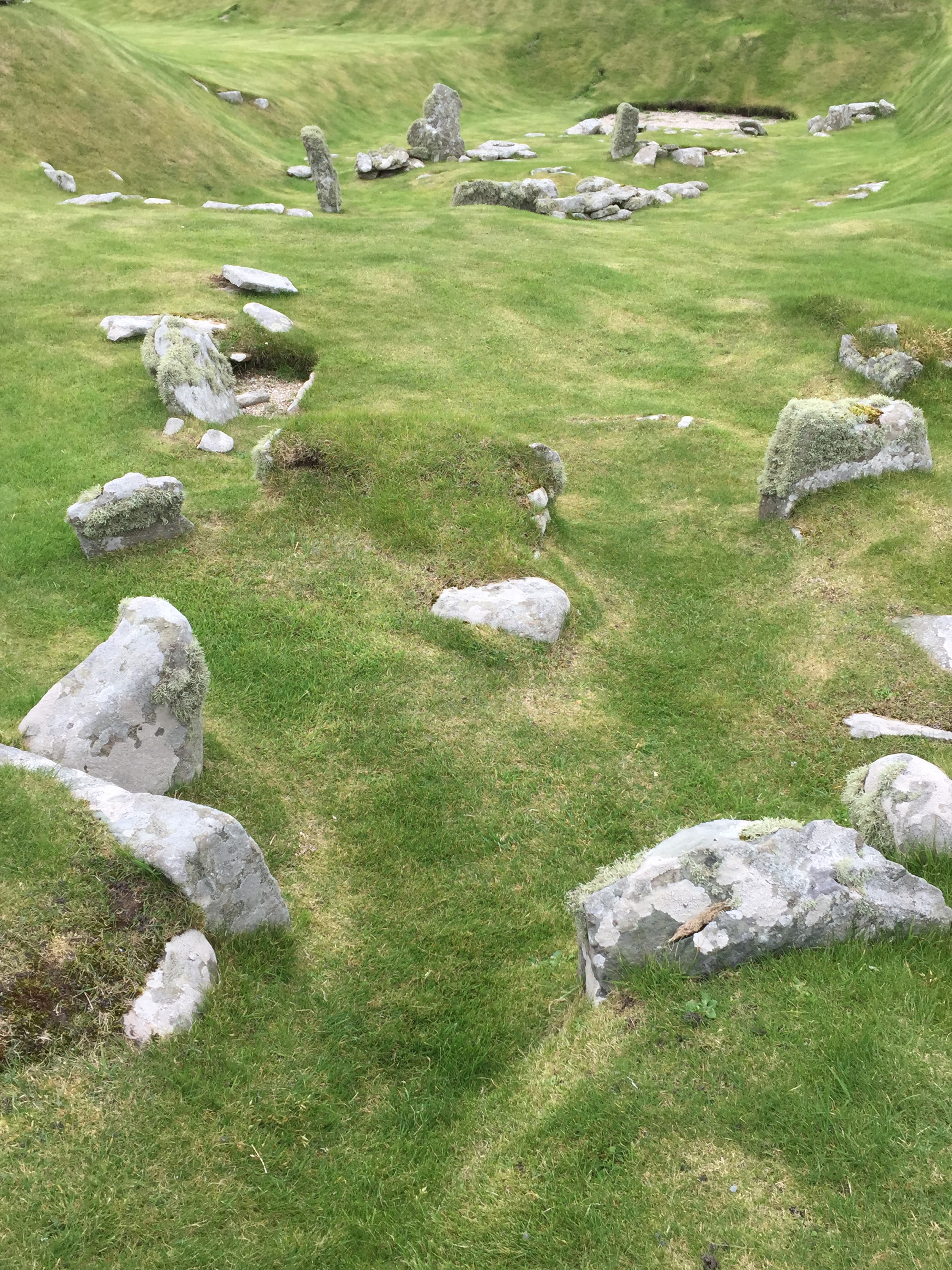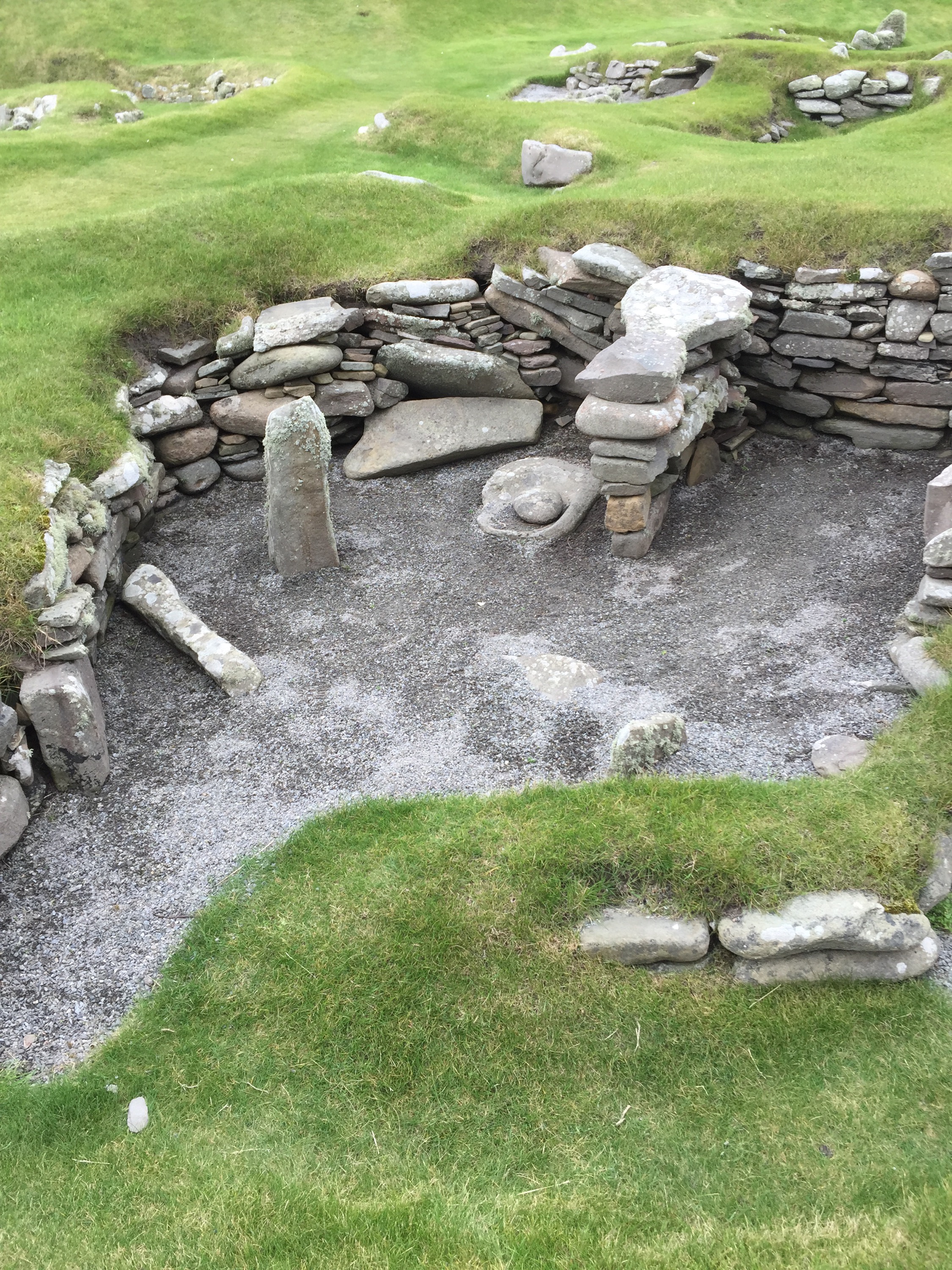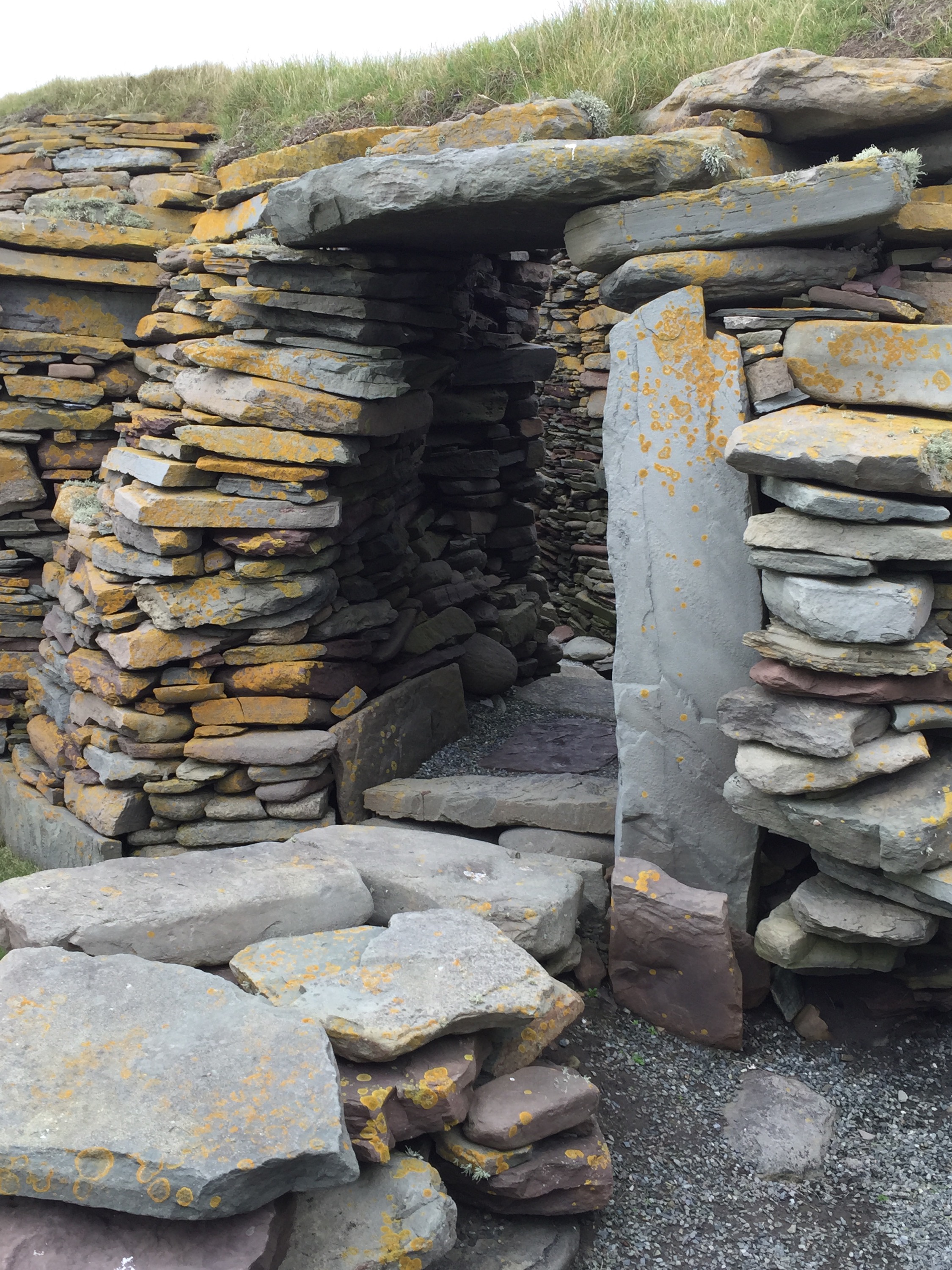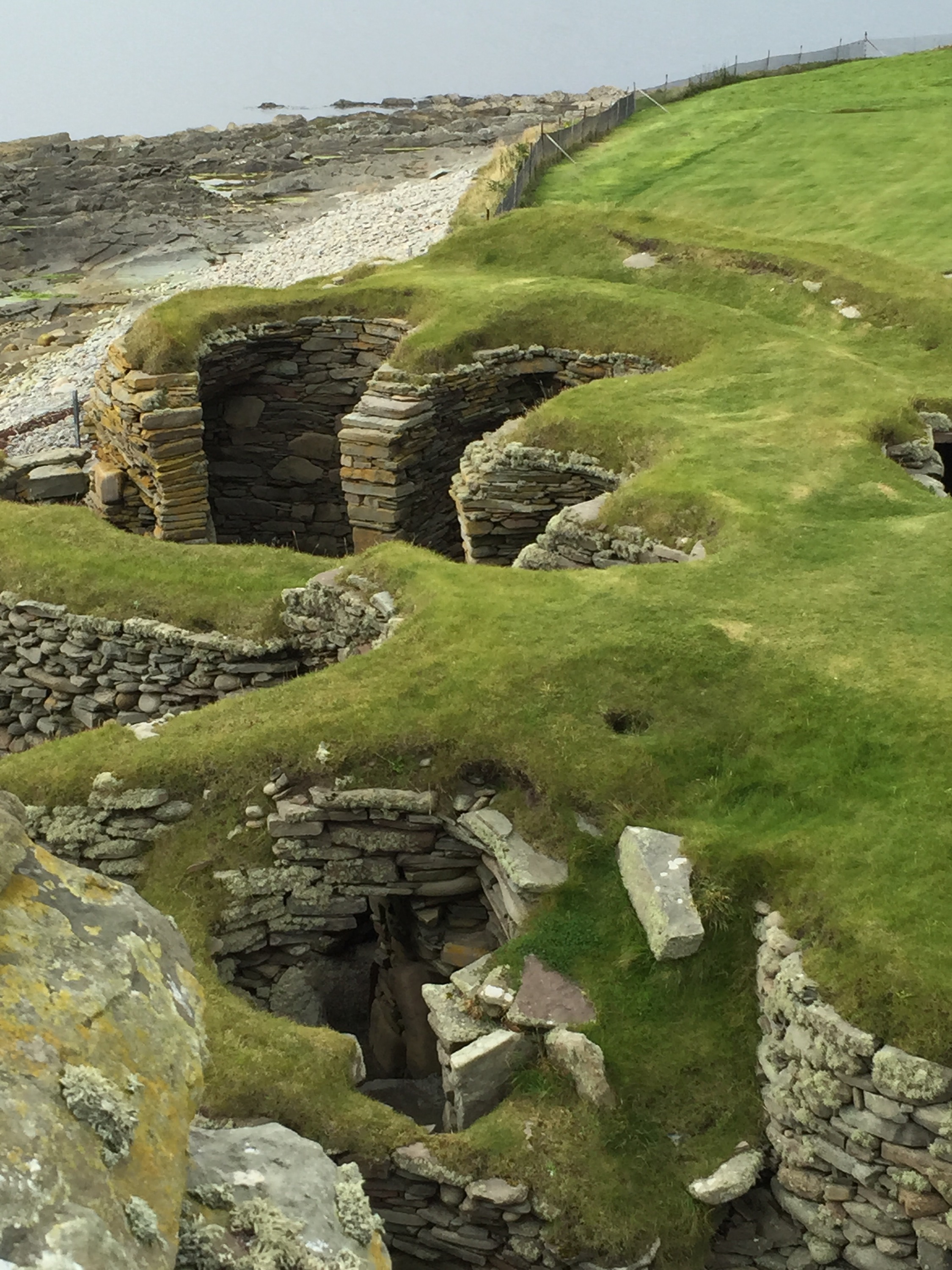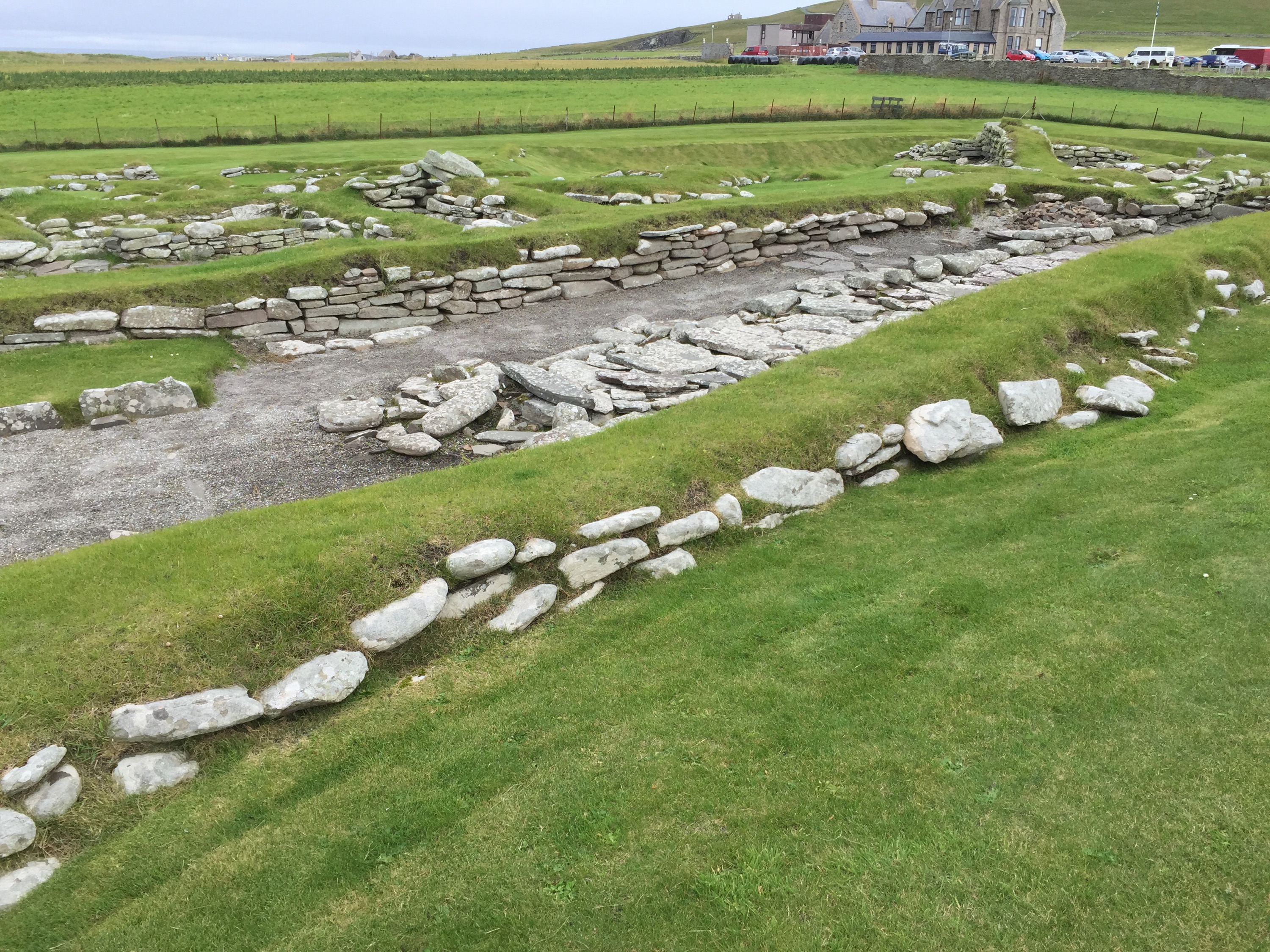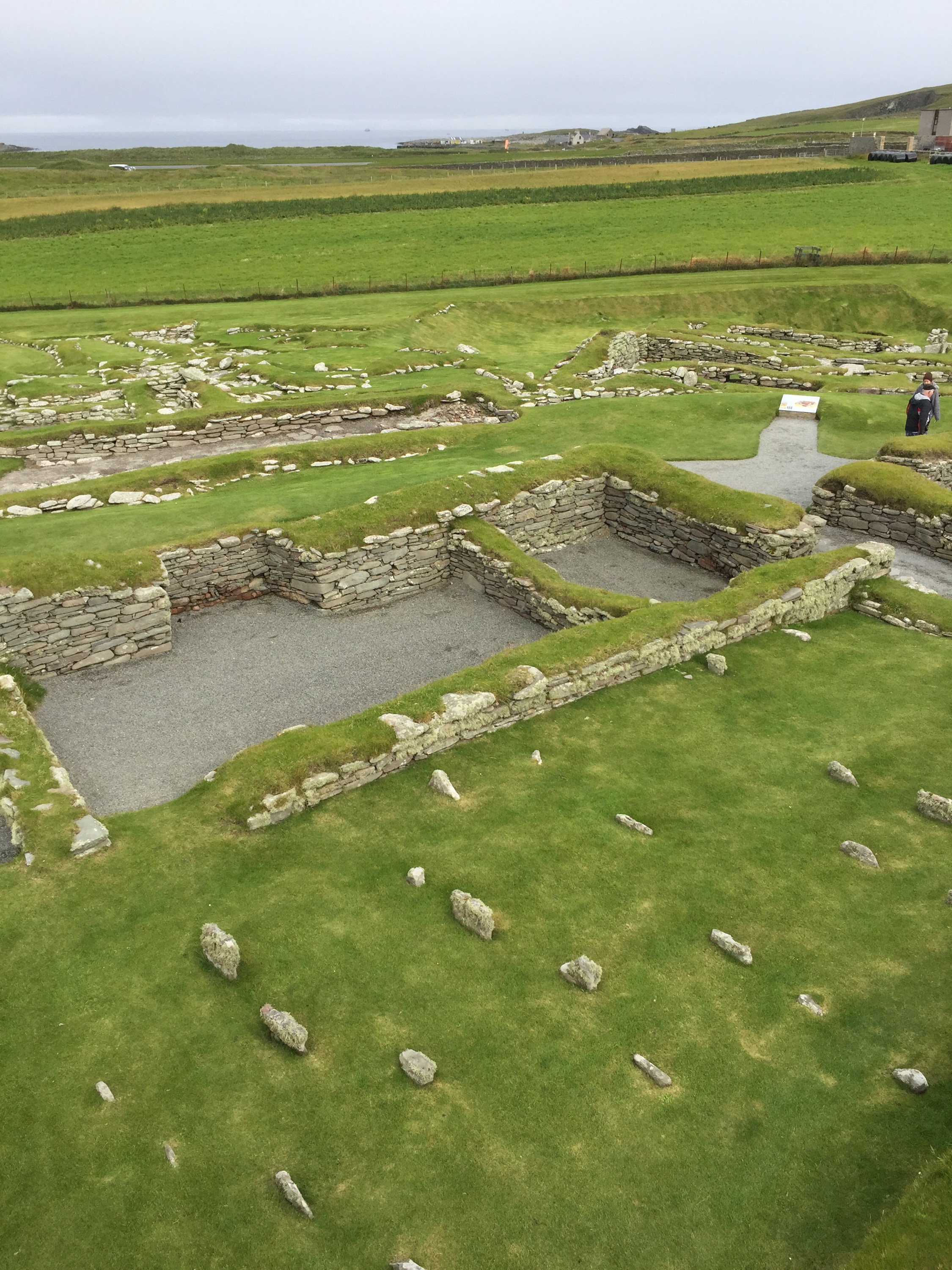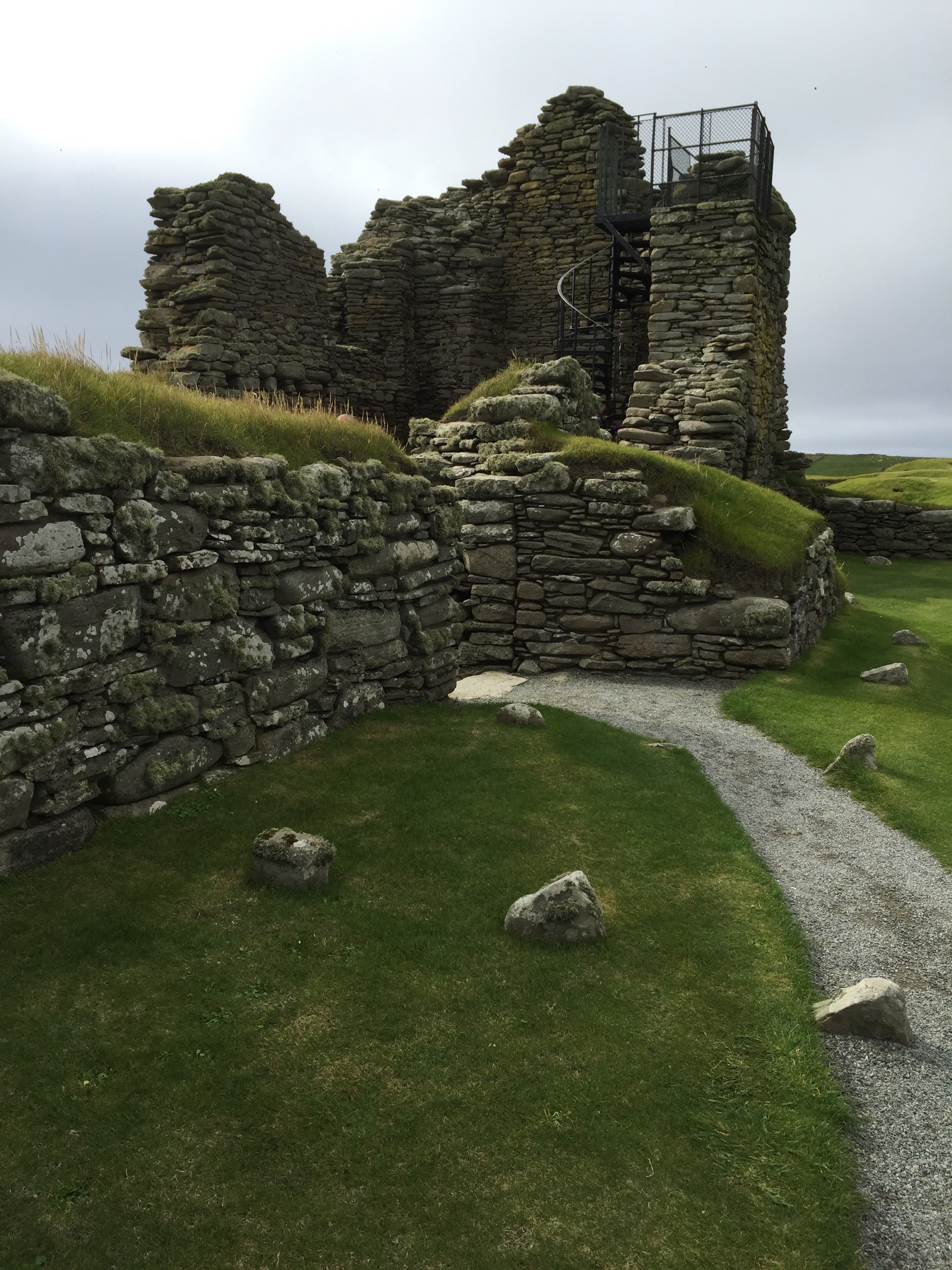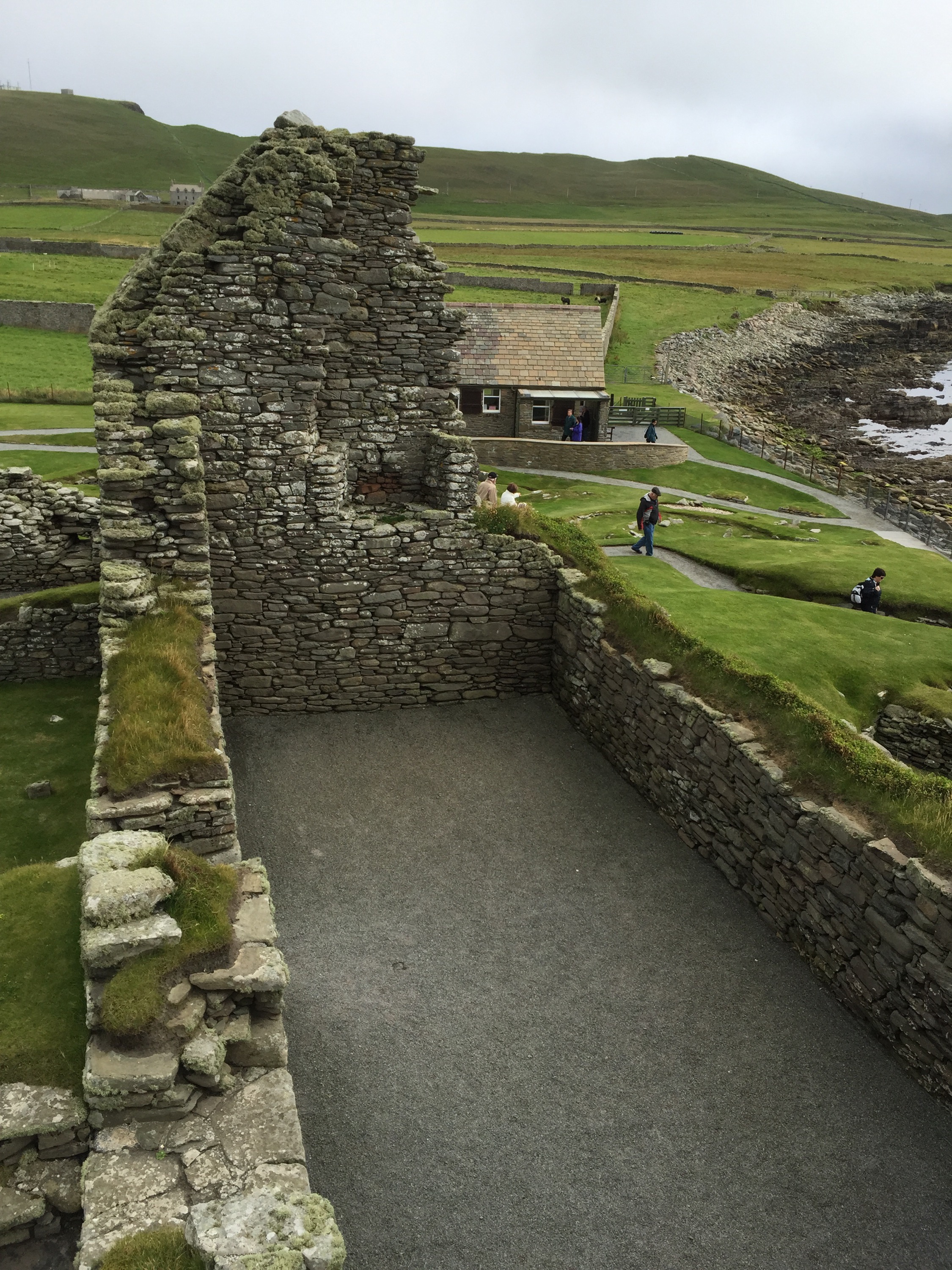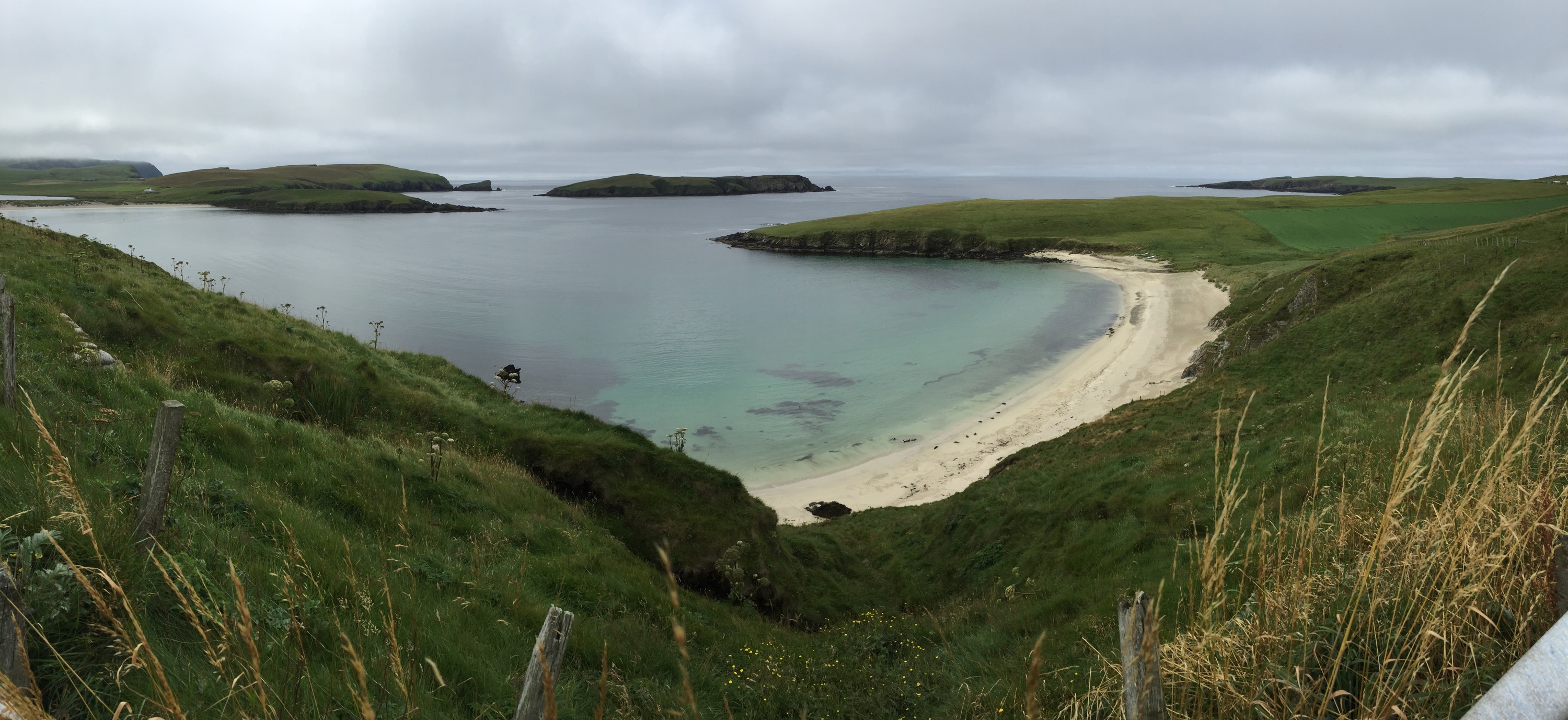I am in Reykjavík… Never thought I’d be saying that! But here we are in the capital of Iceland, which incidentally, is the northernmost capital city in the entire world. Every time you read ‘Reykjavík’, make sure you hear it with long rolled R’s in the most pretentious and exaggerated manner you can muster. We’ve discovered that it’s ever so much fun. 😀
 Anyway, Reykjavík is a relatively new city having only gained Municipal Trading Rights (whatever those are), in 1786 (still older than any cities back home) and it is currently home to 180,000 people which is about half of Iceland’s entire population. RRReykjavík is also know as the ‘Land of Rainbows’, but that could be them trying to put a good spin on the frequently rainy weather – which happily we saw very little of today with gorgeous blue skies everywhere we went.
Anyway, Reykjavík is a relatively new city having only gained Municipal Trading Rights (whatever those are), in 1786 (still older than any cities back home) and it is currently home to 180,000 people which is about half of Iceland’s entire population. RRReykjavík is also know as the ‘Land of Rainbows’, but that could be them trying to put a good spin on the frequently rainy weather – which happily we saw very little of today with gorgeous blue skies everywhere we went.
Reykjavík has some incredible history behind how it came to be settled. Apparently the first settlers were Irish monks. An 6thC Irish monk named St Brendan, had a timber framed leather boat that he sailed all the way from Ireland to the Faroe Islands. He stayed there until his leather dried out, and then apparently sailed on to Iceland. When he went back to Ireland, he reported that he had found a place perfect for monastic contemplation that was plentiful with fish and had a midnight sun : “At midnight it is light enough to pick the lice from one’s shirt…” So Irish monks migrated to Iceland. The monasteries grew to be quite a colony of monks, but (depending on who is telling the story), the monks either fled from Viking raiders or they died out, because, well… they’re monks and they didn’t bring any women with them. Either way the monkish period didn’t last.
In 874AD a Norwegian viking chieftain, Ingólfur Arnarson came across the North Sea looking for farming lands, being the first to come to Iceland. The vikings needed a place with good shelter, and plenty of grass for their sheep and horses. They found these things in Reykjavík and stayed a few years to see if they could survive the winter before bringing more people to the settlement. This fledgling society was completely independent of the Norwegian viking society they left behind, and life in the new settlement was somewhat brutal and lawless. Eventually the new settlers decided to establish a parliament.
 The first parliament, or Althing, was established at Thingvellir, a unique place with natural shelter and fresh water where the new settlers could meet at the beginning of each summer. They gathered for two weeks of the year to exchange news, discuss and create laws, celebrate marriages and to hand out punishments etc. They never made any permanent buildings at Thingvellir, and would pretty much camp, and meet in circles in the protection of the ravine.
The first parliament, or Althing, was established at Thingvellir, a unique place with natural shelter and fresh water where the new settlers could meet at the beginning of each summer. They gathered for two weeks of the year to exchange news, discuss and create laws, celebrate marriages and to hand out punishments etc. They never made any permanent buildings at Thingvellir, and would pretty much camp, and meet in circles in the protection of the ravine.
None of the laws created at the Althing were written down until 1180AD – instead the Lawspeaker would stand on the Law Rock would to recite, by heart, 1/3 of all the laws of the land, every year. By 1262 the Thingvellir parliament was not so important in deciding laws etc, because Iceland had come formally under Norway.
Thingvellir is very much considered the Heart of Iceland, and not just because of its historical significance to the first settlement, but also because it lies directly on the join between the American and Eurasian tectonic plates. This fault line has been slowly been pulling apart for the last 9000 years creating a picturesque ever widening ravines that are simply gorgeous. Between the plates, an enormous lake, called Thingvallavatn (Iceland largest natural lake), has formed in a sort of tectonic no mans land between the plates that is up to 300m deep in parts.

 The Mid Atlantic Tectonic Ridge is comprised of 100% volcanic basalt which is exactly the same as the ocean floor where the plates meet, but it has been pushed up by volcanic movement. The basalt, bring relatively low in silicon compared to other volcanic areas, is evident in the beaches and rocky lava-like landscape and is used for road building etc.
The Mid Atlantic Tectonic Ridge is comprised of 100% volcanic basalt which is exactly the same as the ocean floor where the plates meet, but it has been pushed up by volcanic movement. The basalt, bring relatively low in silicon compared to other volcanic areas, is evident in the beaches and rocky lava-like landscape and is used for road building etc.
Thingvellir is so beautiful and I would love to come back here and go camping and exploring the place. Just gorgeous landscapes and apparently great snorkeling in the crystal clear glacial waters.
The area still has frequent volcanic eruptions, the most notable recent eruption was the 2010 eruption of Eyjaljallajökull, the enormous ash cloud of which grounded flights all over Europe and stranded hundreds of thousands of people. Apparently at the time, the eruption provided Icelanders with loads of amusement as they watched the world’s journalists struggle to attempt to pronounce Eyjaljallajökull. Apparently the American journalists gave up pretty quickly and nicknamed the volcano, ‘E15’ – meaning “E and 15 unpronounceable letters”! For the record it’s easy – Eyjaljallajökull is pronounced ‘AY-uh-fyat-luh-YOE-kuutl-luh’. See? Simple. 😀
Our next stop was to see the geysers, and not just any geysers, *the* original geysers. ‘Geysir’ is the Icelandic word meaning ‘to splash water around’, and all other geysers in the world are named after these original Icelandic geysers. There is the bigger but now very quiet Geysir, but he doesn’t erupt anymore, and his little brother, Strökkur that goes up about every 7-8 minutes. The Geo-thermal hot spring water builds up in pressure and he burbles and boils away until whoosh… and ‘he jumps about all the time’. I love that the Icelanders call the geysers, ‘him’ and ‘he’, it sounds really quaint and personal (even though I know it’s just a result of Icelandic being an engendered language).



After visiting Strökkur and watching him go off several times, we head off to the Gullfoss Waterfall. Aka, The ‘Golden Waterfall’, so named for the frequently golden rainbows that show up when the sun shines through the spray from incredible amount of water cascading down the impressive three level waterfall.
 In 1907 a foreign business interest wanted to harness the power of the Gullfoss Falls by building a hydro electric power station on the site, but a local farmer, Tómas Tómasson and his daughter, Sigrídur Tómasdóttir, who had been bring tourists to see the waterfalls by horseback since 1875. Tómas apparently claimed, “I will not sell my friend!” when offers for the land were made to him; his daughter, Sigrídur is credited with saving the waterfalls by walking on foot into Reyjavik to front the Parliament and demanding the waterfalls be saved. She even threatened to throw herself into the falls if the plan went ahead. The Parliament capitulated and built a power plant somewhere else. The falls have been leased to several foreign private interests since then, but always to people who were against ever using the falls as a power plant. The site now belongs to the govt and is a protected site. I have to say these are some of the most impressive waterfalls I have seen anywhere. Easily a match for the spectacular falls of Wells Grey National Park in Canada. Absolutely breathtaking.
In 1907 a foreign business interest wanted to harness the power of the Gullfoss Falls by building a hydro electric power station on the site, but a local farmer, Tómas Tómasson and his daughter, Sigrídur Tómasdóttir, who had been bring tourists to see the waterfalls by horseback since 1875. Tómas apparently claimed, “I will not sell my friend!” when offers for the land were made to him; his daughter, Sigrídur is credited with saving the waterfalls by walking on foot into Reyjavik to front the Parliament and demanding the waterfalls be saved. She even threatened to throw herself into the falls if the plan went ahead. The Parliament capitulated and built a power plant somewhere else. The falls have been leased to several foreign private interests since then, but always to people who were against ever using the falls as a power plant. The site now belongs to the govt and is a protected site. I have to say these are some of the most impressive waterfalls I have seen anywhere. Easily a match for the spectacular falls of Wells Grey National Park in Canada. Absolutely breathtaking.
We stopped at the cafe above the falls for a lovely lunch of tomato soup and grilled salmon and then head off to the Friedheima
Icekandic Horse show. Icelandic horses were very important for agriculture, general travel and even social infrastructure right up until the mid 20thC. In 1920-30s approximately 80% of houses were still turf houses with no insulation and no cars – only horses. There was no real roads built until the 1960s and the major linking highway – Ring Road 1, wasn’t completed until 1973.
The Icelandic horses are unique – they are descendants of the original viking domestic horses that the Norwegian vikings brought to Iceland during the original early settlement.
A law was made in the 11thC that absolutely no horses could be imported into Iceland and that law still stands. The reason for this was two fold – firstly to maintain the sturdiness of the breed, and secondly to reduce the chance of bringing in diseases and infections the horses might not have previously been exposed to. So the isolation of the current Icelandic horse means they are very much genetically the same as their viking predecessors.
The laws are so strict that once a horse leaves Iceland it is never allowed back – even champion show horses competing in international competitions. So breeders will never takes their best horses to championship events internationally as they can’t bring them back.
 The other reason the horses are so unique and genetically similar to their fore bearers is that they have never been bred for appearances. The horses are extremely low and hardy with a thick shaggy coat. All they need is a bit of hay and they can survive ok through the harsh winter outdoor conditions. So they’ve effectively been bred to survive rather than be pretty. They are known for their nice kind, easy going temperament and for being very strong – an Icelandic pony can carry 100kgs for an hour at full pace with no problem. Their only job was to transport people and survive winter no one cared what they looked like, so they are all one breed but come in up to 40 colours.
The other reason the horses are so unique and genetically similar to their fore bearers is that they have never been bred for appearances. The horses are extremely low and hardy with a thick shaggy coat. All they need is a bit of hay and they can survive ok through the harsh winter outdoor conditions. So they’ve effectively been bred to survive rather than be pretty. They are known for their nice kind, easy going temperament and for being very strong – an Icelandic pony can carry 100kgs for an hour at full pace with no problem. Their only job was to transport people and survive winter no one cared what they looked like, so they are all one breed but come in up to 40 colours.
 They do not do any dressage or jumping events with the Icelandic horses, but the horses are famous for their unusual ability to master a wide range of gait. Now this means SFA to me, but these ponies walk, trot, canter, gallop, tilt, and pace… and apparently that makes them the only horses that tilt *and* pace. It is the special gait of Icelandic horses alone. (If you want to know more about that, you’ll have to Google it because I have no idea what it’s about).
They do not do any dressage or jumping events with the Icelandic horses, but the horses are famous for their unusual ability to master a wide range of gait. Now this means SFA to me, but these ponies walk, trot, canter, gallop, tilt, and pace… and apparently that makes them the only horses that tilt *and* pace. It is the special gait of Icelandic horses alone. (If you want to know more about that, you’ll have to Google it because I have no idea what it’s about).
There are over 120,000 horses in Iceland and each year about 3000-5000 horses sold and exported overseas as they are quite prized for being strong and pure seeing that the breed hasn’t really changed for over 800 years.
On our way back to Reykjavík, we passed through fairly recent lava fields that are only 1000 years old, which are full of craggy basalt rocks and large stones. The topic of elves came up again as our guide, Alexandra was taking about the road construction. She said that Icelanders believe that elves live in big stones and they are usually quite nice and benign, but they can be mean. So when the road was under construction and the machinery broke down three times, it was obviously the work of unhappy elves, and that this sort of thing would be shown on the evening and people seriously discussed what to do about it. In 2000 they were building a road near Reykjavík that had elf stones in the road, and they started to have major mechanical problems due to elves being displeased so the built a special side road around the stones and everyone had to use the side road until 2003, when the elf representative, Erla Stefansdottir, said that the elves had moved out. So they recommended work on the road without any problem and it was eventually able to be finished. I am still finding this bizarre.
Once we got back to Reykjavík we stopped by the Perlan, a spectacular 10 story high architectural building that houses Reykjavík’s geothermal water storage. All of Reykjavík is heated with natural geothermal water that is moved hundreds of miles from the most active areas through an extensive series of pipes and then stored at the Perlan until it is distributed to homes. The Perlan was a series of unattractive silos until the sides were built in, and the distinctive dome top added which also has a public observation deck offering beautiful panoramic views of Reykjavík and the bay Area. It’s a very distinctive building with a unique purpose.
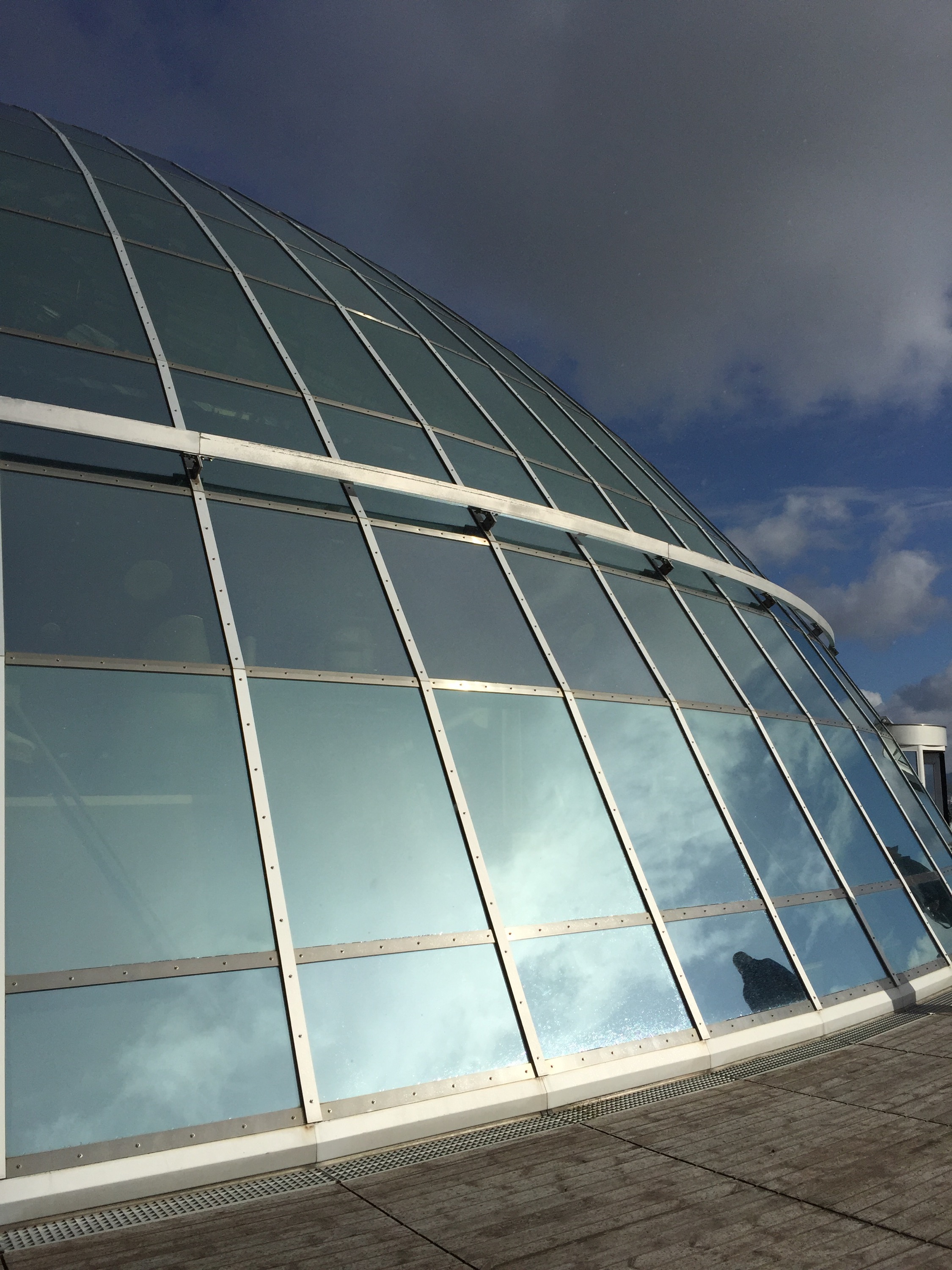

We then had a quick drive through Reykjavík and back to the ship. It was a long day but the Reykjavík Golden Circle is amazing. So many beautiful places to see… it definitely makes me want to come back (preferably with way fewer American tourists!).








